

Simchat Shmuel
Rabbi Sam Shor Page 42
Haftorah Insights: Looking Back, Moving Forward Page 48
Rebbetzin Dr. Adina Shmidman
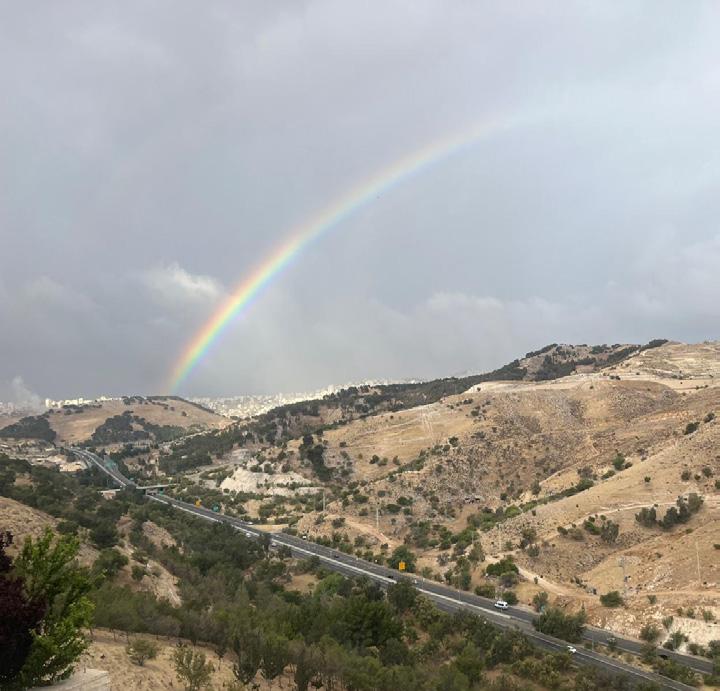

ADVERTISING & SPONSORSHIPS 02-560-9125 TorahTidbits.com OU ISRAEL 02-560-9100 YERUSHALAYIM SHABBAT PARSHAT EMOR CANDLES 6:55 PM • EARLY 6:03 PM • HAVDALA 8:12 PM • RABBEINU TAM 8:48 PM ה"ב ISSUE 1564 United
י:ג״כ ארקיו םכל ןתנ ינא רשא ץראה־לא ואבת־יכ
MAY 18 2024 ▪ ד"פשת רייא ׳י רומא תשרפ PARSHAT EMOR
We Stand
AVOT CHAPTER 3
Aliya-by-Aliya Sedra
Rabbi Reuven
Rabbi
Rabbi Moshe Taragin
Back Moving Forward Rebbetzin Dr. Adina Shmidman
Power of Vinegar

4 Teens by Teens
Ezra & Tali Silton // Chana Kenton
Photographed by Julia Weinberg. Julia and Josh Weinberg made Aliyah in the summer of 2021 from Southfield Michigan. They have five children. They made aliya because their oldest daughter was ten at the time and each year that advanced represented an increasingly difficult transition period. The picture was taken from their home in Maale Adummim and shows a rainbow spreading over Jerusalem. On a national level, the picture represents the ever-springing renewal with our Creator in His holiest city in these darkest of times. On a personal level, the picture represents our family’s continued ascent in this nation and Land, which began in 2021. Julia is an interior designer, and the firm she founded, Julia Robin Interiors, is currently engaged in projects both in Israel and abroad. Julia loves to capture the beauty in life that exists both in the home and outside of it.

2 TORAH TIDBITS 1564 / EMOR Table of Contents IMPORTANT REMINDERS KIDDUSH LEVANA
8
May 15 Last Opportunity to Say Kiddush Levana until:
Iyar/ Wed. night
42 Simchat
Sam
44 Moral Relativism and
7 Days After Molad:
Iyar/ Wed. night
14
May 22
Shmuel Rabbi
Shor
the War in Israel
48
50
52 The
Rabbi
56 Swords
Hefker
58 Fragility
Eliezer
60
Looking
Counting Up Rabbi Aaron Goldscheider
Daniel Mann
of Iron #4
After Gemar Melachah Rabbi Moshe Bloom
and Strength
Meir Saidel
Torah
62 The
Netanel Epstein 04 Dear Torah Tidbits Family
Avi Berman 08 The Visible and Invisible Gifts From Hashem
Moshe Hauer 12
Y-Files Comic
Rabbi
Rabbi
Summary
Tradburks 18 A Life of Sanctification
Weinreb 24 The Duality of Jewish Time Rabbi Lord Jonathan Sacks zt"l 28 Probing the Prophets Rabbi Nachman Winkler 32 Schedule OU Israel 36 Sefirat Ha’omer 49 Meaningful Days Rabbi Shalom Rosner 38 Gearing for Greatness
Shira Smiles 40 Words that Shine
Judah Mischel
Dr. Tzvi Hersh
Rebbetzin
Rabbi
CANDLE LIGHTING OTHER Z'MANIM
Yerushalayim/Maale Adumim
Aza Area (Netivot, Sderot et al)
Mond/Herzliya/K.Saba
/ Bikat HaYarden
All Times According to MyZmanim (20 mins before Sunset in most Cities; 40 mins in Yerushalyim and Petach Tikva; 30 mins in Tzfat and Haifa)
All Times According to MyZmanim (20 mins before Sunset in most Cities; 40 mins in Yerushalyim and Petach Tikva; 30 mins in Tzfat and Haifa)
Daf Yomi: Bava Metzia 80
Daf Yomi: Kidushin 69
MITCHEL R. AEDER, PRESIDENT OF THE ORTHODOX UNION Yehuda Neuberger, Chairman of the Board, Orthodox Union | Dr. Josh Penn, OU Kashrus Commission
RABBI MOSHE HAUER, EXECUTIVE VICE PRESIDENT | RABBI JOSHUA M. JOSEPH, ED.D. EXECUTIVE VICE PRESIDENT & CHIEF OPERATING OFFICER Rabbi Dr. Tzvi Hersh Weinreb, Exec. V.P. Emeritus OU KOSHER: Rabbi Menachem Genack, CEO/Rabbinic Administrator OU Kosher | Rabbi Moshe Elefant, COO/Executive Rabbinic Coordinator ISRAEL: Rabbi Yissachar Dov Krakowski, Rabbinic Administrator | Rabbi Ezra Friedman, The Gustave and Carol Jacobs Center for Kashrut Education/ Deputy Rabbinic Administrator Headquarters: 40 Rector St. 4th floor, New York, NY 10006 212-563-4000 website: www.ou.org
Editor Emeritus: Phil Chernofsky
Editor: Rabbi Aaron Goldscheider | aarong@ouisrael.org
Advertising: Ita Rochel | 02-5609125 or ttads@ouisrael.org
Website: www.torahtidbits.com
Not getting enough TTs? Too many? None at all? Contact our DISTRIBUTION 050-577-2111 • ttdist@ouisrael.org
JERUSALEM
JERUSALEM
Ranges 11 days Wed - Shabbat
Ranges 11 days Friday - Shabbat
Oct x - x / x - x Cheshvan
May 15 - 25 / 7 - 17 Iyar
Earliest Tallit and Tefillin x:xx - x:xx
Earliest Tallit and Tefillin 4:45 - 4:38
Sunrise x:xx -
Sunrise 5:42 - 5:37
Zman Kriat Shema
Sof Zman Kriat Shema 9:09 - 9:06
Avraham
Magen Avraham 8:27 - 8:24
Sof Zman Tefila
(According to the Gra and Baal HaTanya)
Sof Zman Tefila 10:17 - 10:16 (According to the Gra and Baal HaTanya)
(Halachic Noon) x:xx -
Chatzot (Halachic Noon) 12:35 - 12:36
Mincha Gedola (Earliest Mincha) x:xx -
Mincha Gedola (Earliest Mincha) 1:10 - 1:11
Plag Mincha x:xx -
Plag Mincha 6:02 - 6:08
Sunset (Including Elevation) 7:33 - 7:40
Seymour J. Abrams • Orthodox Union Jerusalem World Center • Avrom Silver Jerusalem College for Adults • Wolinetz Family Shul • Makom BaLev • Birthright • Yachad • NCSY in Israel • JLIC in Israel • Camp Dror • Pearl & Harold M. Jacobs ZULA Outreach Center • The Jack Gindi Oraita Program • OU Israel Kashrut
STUART HERSHKOWITZ, PRESIDENT OU ISRAEL Zvi Sand / Yitzchak Fund: Former Presidents, OU Israel | Rabbi Emanuel Quint z”l, Senior Vice President | Prof. Meni Koslowsky, Vice President
VAAD MEMBERS:
Michael Elman | Yonatan Frankel | Yitzchak Fund | Daniella Hellerstein | Stuart Hershkowitz | Jeremy Lustman | Meir Raskas | Atara Reichel | Zvi Sand | Norman Schmutter | Mark Schneider | Esther Williams RABBI AVI BERMAN, EXECUTIVE DIRECTOR, OU ISRAEL
David Katz, CFO, OU Israel | Natan Kandler, COO, OU Israel | Chaim Pelzner, Director of Programs, OU Israel | Rabbi Sam Shor, Director of Programs, OU Israel Center | Rabbi Sholom Gold zt"l, Dean, Avrom Silver Jerusalem College for Adults 22 Keren HaYesod <> POB 1441 <> Jerusalem 9101032 phone: (02) 560 9100 | fax: (02) 561-7432 email: office@ouisrael.org website: www.ouisrael.org
Sunset (Including Elevation) x:xx - x:xx OU Kashrut NCSY Jewish Action JLIC NJCD / Yachad / Our Way OU West Coast OU Press Synagogue/Community Services OU Advocacy OU Israel
Founders and initial benefactors of the OU Israel Center: George and Ilse Falk a"h
Torah Tidbits and many of the projects of OU Israel are assisted by grants from THE JERUSALEM MUNICIPALITY

OU Israel, Torah Tidbits does not endorse the political or halachic positions of its editor, columnists or advertisers, nor guarantee the quality of advertised services or products. Nor do we endorse the kashrut of hotels, restaurants, caterers or food products that are advertised in TT (except, of course, those under OU-Israel hashgacha). Any "promises" made in ads are the sole responsibility of the advertisers and not that of OU Israel, the OU Israel Center , Torah Tidbits.
OU ISRAEL CENTER 3 AND HAVDALA TIMES
x:xx
x:xx - x:xx Magen
x:xx - x:xx
x:xx-x:xx
Sof
Chatzot
x:xx
x:xx
x:xx
BEHAR EMOR HAVDALA EARLY CANDLES HAVDALA EARLY CANDLES
6:59 8:12 6:03
8:19 6:10 7:17 8:14 6:06
8:17 6:08
6:55
7:12
8:18 6:09 7:18 8:13 6:05 7:14
8:17 6:08 7:15 8:12 6:04 7:10
8:20 6:10 7:17 8:15 6:06 7:12 Raanana/Tel
8:19 6:09 7:16 8:13 6:05 7:11
8:20 6:10 7:17 8:15 6:07 7:13
8:18 6:09 7:15 8:13 6:05 7:11
8:19 6:10 7:17 8:14 6:06 7:12 Rehovot 8:20 6:10 6:59 8:14 6:06 6:55 Petach Tikva 8:19 6:09 7:16 8:14 6:05 7:11 Ginot
8:22 6:11 7:08 8:16 6:07 7:03 Haifa
8:18 6:08 7:15 8:13 6:04 7:10
8:20 6:10 7:17 8:15 6:06 7:12 Tel Aviv
8:18 6:08 7:19 8:13 6:04 7:15 Givat
8:17 6:08 7:15 8:12 6:04 7:10 Chevron
8:20 6:10 7:17 8:15 6:07 7:13 Ashkelon 8:19 6:10 7:16 8:14 6:06 7:12 Yad Binyamin 8:20 6:09 7:11 8:14 6:05 7:06 Tzfat
8:19 6:08 7:15 8:13 6:04 7:10 Golan 8:22 6:11 7:18
Nahariya/Maalot
Afula
Beit Shemesh/RBS
Alon Shvut
Modiin/Chashmonaim
Netanya
Be’er Sheva
Shomron
/ Zichron
Gush Shiloh
/ Givat Shmuel
Zeev
/ Kiryat Arba
8:16 6:07 7:12
8:20 6:09 7:16 8:14 6:05 7:12
Rabbeinu Tam (Jerusalem): Emor 8:48 PM • Behar 8:53 PM

DEAR TORAH TIDBITS FAMILY
DEAR TORAH TIDBITS FAMILY
RABBI AVI BERMAN Executive Director, OU Israel aberman@ouisrael.org
Many years ago, my friend was in a major car accident. The next morning, his father gave him the keys to the family car and said, “Go out for a drive.” My friend responded, “Dad, maybe give me a few days, a bit of time to get over what just happened. I’m not sure I’m ready to hit the road just yet.” His father took him to the car and said, “Get in.” His father explained he was convinced that if my friend got back on the road, it would prevent the trauma from truly setting in. Instead, he’ll realize that he’s ok, that mistakes happen, and it doesn’t have to be scary. He could start to heal. When my friend related this story to me, he shared that he couldn’t thank his father enough. “It was one of the best things he ever did for me,” he told me. “I believe I would have been afraid to get back in the car for a very long time.”
A few days ago, I attended a Hachnasat Sefer Torah, a celebration of the completion and dedication of a new Torah scroll. It was written in memory of the commander of the Nachal brigade, aluf mishneh Yoni
In loving memory of
our husband, father, grandfather
and great
grandfather
GrampyDr. Bernard Friedson z”l
on his 17th yahrzeit - 6 Iyar
Ruth Friedson, Arlene Saslow and the entire Friedson family
RABBI AVI BERMAN Executive Director, OU Israel
Steinberg HY”D, who was killed on Simchat Torah fighting back the terrorists. Yoni grew up here in Givat Zeev, and even though he lived in Shomria with his wife and children, his parents still live here in Givat Zeev, and are prominent members of our community. Yoni was a true mensch. I had the honor of meeting him many times when he came to visit his parents for Shabbatot and Chagim, and also in his capacity of various leadership positions in the army. He was a man with endless courage, but also tremendous modesty.
There was something surreal about attending this Hachnasat Sefer Torah. How much dancing with Torah scrolls was stopped this past Simchat Torah? How many have been danced with since? I danced, but with a little bit of trepidation in my heart. It was so beautiful to see the family dancing, and all the Nachal soldiers who came and danced with us, and the rabbis and members of the shul bringing the other Sifrei Torah from the shul out to dance with the new one. It was moving, to say the least, but there was also that dissonance. The last time we danced like this ended up being a day that was very hard for the Jewish People.
Then I thought of my friend from so many years ago, who was almost forced to get back into the driver’s seat and deal with his fears and anxiety. And I realized the dancing we were doing now was a kind of therapy, of getting back into the driver’s seat and dancing again with the Torah. Being able to dance
4 TORAH TIDBITS 1564 / EMOR
ל”ז רטלא ןושמש ןב רעב בד

the way we were, in the open streets of Givat Zeev with so many neighbors looking from their windows was a moment of tikkun, of getting back to a time before October 7th in just a small way. When I closed my eyes, I was transported to what Simchat Torah could have been for us. (The difference was that this time, people had their phones and cameras out and were taking pictures of the festivities!)
One of the most fascinating things about this Hachnasat Sefer Torah is that the new Torah scroll we danced with was one of eighteen Sifrei Torah that were commissioned in honor of soldiers who gave their lives in this war against Hamas. Most of the donors were anonymous. Hundreds of people were at this Hachnasat Sefer Torah, and the community doesn’t have any idea who donated it.
I was touched by this. I pulled my son Mordechai to the side and said, “Do you realize how much money was put into this? All that money, in honor of someone he or she didn’t know and wasn’t related to, but was honored for just being a soldier for the Jewish People.” I thought there was such a tremendous lesson to be learned from this. Often, a Hachnasat Sefer Torah is done by relatives. The reality is this soldier was really our relative. The Jewish People are all part of the same family. There’s no such thing as a “distant relative” to us, and he gave up his life to protect us.
Due to the print deadline, I’m writing this article before Yom HaZikaron and Yom HaAtzmaut. We are having an OU Yom HaZikaron and Yom HaAtzmaut mission from North America, which includes Rabbi Dr. Josh Joseph (OU Executive Vice President & COO),

Yoni Cohen (OU Chief of Staff), and Rebbetzin Aliza Bixon of Miami, FL. Our brothers and sisters from so far away want to be close, and want to be with us and connect to us on these days. They know that this year these days take on additional meaning. They want to stand on Har Herzl and be together with mothers and fathers who lost their children, husbands and wives who lost their spouses, children who lost their parents.
It’s because whether we know the soldiers
Dedicated L’iluy Nishmat
Henry
OU ISRAEL CENTER 5
ל”ז בקעי ךורב ר”ב ךונח ’ר
Yahrtzeit is on רייא ג”י
Schiffmiller z”l whose 23rd
Phototographed by
Eliyahu Yannai
Phototographed by
Eliyahu Yannai
who fell or not, they are all our immediate family members. We might not cry as much as the true immediate family does. Our lives haven’t been turned upside down like theirs have, and our lives have not become as challenging and painful as theirs have. But, we all empathize and understand how Am Yisrael is really one heart and one soul.
The ability to stand at a Hachnasat Sefer Torah, together with my children, and for them to see their shul fuller than they have ever seen it, with hundreds outside the shul because there was simply no room inside of it, was so important. It was incredibly meaningful for them to see the kavod that Klal Yisrael gives its soldiers and its Torah.
There was one moment that I’ll never forget. At the end of the entire event, Yoni’s brother stood up with the Sefer Torah and sang the Mi Sheberach for soldiers of the IDF in the special melody. In between the words, you could hear a pin drop. Not a person was talking. The world was listening to him. Every eye had tears in it. It was incredibly emotional because he sang with every bit of feeling he had. But also, we paid attention to the words and we all thought of the same tefilah that Hashem should continue protecting us, and that no more names should be added to the list of fallen and injured soldiers. We stood next to that Sefer Torah and we silently
In loving memory of our father, grandfather and great-grandfather
Marvin Hershkowitz z”l on his 3rd Yahrtzeit
The Hershkowitz Family
beseeched Hashem, “Hakadosh Baruch Hu, enough widows, enough orphans. Enough mothers and fathers losing their children.”
Yoni’s family is continuing in his path. His parents, his wife and his siblings have all spoken to OU missions over the last seven months. Whether at their homes or on Har Herzl, whenever they have spoken to us, everyone went away inspired. The most common line that I hear is that seeing such a family, it is no surprise that they raised a son like Yoni: full of Torah, full of modesty, and full of bravery.
Wishing you all an uplifting and inspiring Shabbat,

Rabbi Avi Berman Executive Director, OU Israel aberman@ouisrael.org
Meaningful People Podcast with Rabbi Berman & Miriam Peretz

SHIUR SPONSORS
TO SPONSOR A SHIUR CONTACT
Chana Spivack - 050-229-4951 or donate online: https://www.ouisrael.org/donate/ou-israel-center/
THURSDAY, MAY 9TH - PRE YOM HAATZMAUT BRUNCH & LEARN was sponsored by Esther Bartov in loving memory of her Mother
THURSDAY, MAY 16TH - RABBI TAUB’S SHIUR is sponsored in loving memory of Mrs. Sally Brauer a”h
of Chicago by her family on her ninth yahrzeit - 9 Iyar
RABBI SNOW’S SHIUR
is generously sponsored for this academic year by Scott & Linda Haniford
RABBI SHAI FINKELSTEIN'S SHIUR
Sponsored for this academic year by the Sondhelm and Wertenteil families in memory of Mel David z"l
RABBI ADLER’S SHIUR
Sponsored for this academic year by the Frist family in memory of their beloved daughter and sister Elisheva Frist
6 TORAH TIDBITS 1564 / EMOR
רייאב ’ה - ה”ע לדנמ םחנמ ברה תב הסדה תרמ נ”על
- ה”ע ריאמ תב הקבר הרש
.
ל"ז הקבר אביוטו ריאמ םהרבא ןב לדנמ םחנמ
- ה"ע ןמלז תב אמיס עבשילא
a"h
ל”ז םירפא ןב םייח השמ
רייא ’י














OU ISRAEL CENTER 7 True wholesaler from the diamond boursa with over 25 years experience member diamond dealers club Engagement Rings ∙ Stud Earrings Pendants ∙ Tennis Bracelets 050-573-9061 jeffmor36@gmail.com www.JeffMorDiamondJewelry.com kerenmalki.org 02-567-0602 Keren Malki empowers families of children with special needs in Israel to choose home care. Donations are tax-approved in Israel, US and UK. Honoring the memory of Malka Chana Roth ד”יה 1985-2001, killed in the Sbarro bombing. MASSAGE THERAPIST & FITNESS TRAINER 052.673.3704 I www.andyhealth.com | jerusalemmyhome@hotmail.com TUVIA ANDY HAAS BALANCE and FALL-PREVENTION SPECIALIST for OLDER ADULTS
Maintain Healthy Bones and Muscles
Decrease Stiffness and Joint Pain
Increase Strength! Stay Independent!

FROM THE DESK OF RABBI MOSHE HAUER
OU EXECUTIVE VICE PRESIDENT
The Visible and Invisible Gifts From Hashem
“Our Father, our King! For the sake of our forefathers who trusted in You, and whom You taught statutes of life, so too, be gracious to us and teach us.” (Birchot Kriat Shma, Ahava Rabba)
Trust is critical to all relationships. Trust in G-d is a key prerequisite to our engagement with Torah learning and observance. This is made clear in the classic Talmudic story (Shabbos 88ab) in which Rava was confronted by a Saducee who derided the Jewish people’s “hasty” acceptance of the Torah, putting our mouths before our ears, committing to action – naaseh – before hearing the details – nishma. Rava responded by proudly affirming the trust in G-d that informed how we as a nation unconditionally accepted whatever Hashem would ask of us. “We proceeded with G-d with a trusting heart, characteristic of those who act with love, relying on Him not to burden us with something we could not bear (Rashi to Shabbos 88b).”
It is therefore understood why the Exodus was the first step towards Sinai and our embrace of Torah (Shemos 3:12) and it was therefore invoked in Hashem’s proposal to us (Shemos 19:3-5). “You have seen what I did to Egypt and how I carried you on the wings of eagles and brought you to Me.” That miraculous event was a trust builder, demonstrating G-d’s love of and commitment to the Jewish people, enabling our unconditional
acceptance of His Torah.
It may also be the basis for our Parsha introducing the counting of ‘the Omer’ as the way we move towards Sinai (Vayikra 23:9-16). ‘The Omer’ was an omer-sized barley flour offering made on the second day of Pesach from the new season’s harvest, acknowledging G-d’s daily gifts to us. The midrash (Vayikra Rabba 28:2) notes that this offering was known by its size to associate it with the daily gift of an omer of manna that sustained us daily in the desert (Shemos 16:16-18). “Rav Berechya taught, “G-d said to Moshe, tell the Jewish people that I used to give an omer of the manna daily to each one of them. Now that they are giving me the omer, I receive only one omer of barley from all of them together.” While our sustenance today grows from the earth, we are compelled to recognize that its true source is no different than the manna that fell directly from the heavens.
This is part of the trust-building exercise that brought us to Sinai. We left Egypt and traveled into the arid desert carrying only the matzoh, the meichla d’mhemnusa, the foodstuff of faith (see Zohar II 183b). That matzoh was the symbol of our faith and it was infused with the heavenly taste of the manna (Kiddushin 38a). Thirty days later, on the fifteenth of Iyar, we ran out of matzoh and G-d informed us that the next day we would begin to receive
8 TORAH TIDBITS 1564 / EMOR
the manna bread from the heavens (Shemos 16:1, 16:4). Those days of visible divine love and support built our faith and enabled us to unconditionally accept the Torah, “our forefathers who trusted in You and whom You taught statutes of life,” such that when we reentered the earthly sphere in Israel with the barley harvest, we offered the omer to remind ourselves that G-d’s continued faithfulness remains critical to our ongoing sustenance. We count the omer, building that awareness further, remembering G-d’s heavenly bread of faith through his earthly gifts.
Now, as then, we must build our faith in G-d to arrive at Sinai. Counting the omer allows us to consider G-d’s hidden role in all that we have now by recalling His visible role


Our first Yom HaAtzmaut in our new sea-view apartment in sunny Ashkelon! Thanks, David, for helping us make our dream come true!”

• Close to Jerusalem & Tel Aviv • Nicest beaches • Growing Anglo Modern Or thodox community • Excellent weather said another happy client





PROFESSIONAL SERVICES & REPAIRS SINCE 1898


seat cores
SEAT CORE REPLACEMENT- With new HIGH DENSITY plywood seat cores
CANE SEAT/BACK REPLACEMENT
CANE SEAT/BACK REPLACEMENT
LEG TIPS for quieter chairs and helps to prevent water damage to the legs
LEG TIPS for quieter chairs and helps to prevent water damage to the legs
9
1898 2024 **************** RESTORE YOUR FURNITURE TO HEALTH **************** Website: www.thefurnituredoctor.co.il Email: office@thefurnituredoctor.co.il Phone: 02-999-2418 WhatsApp: 058 787 3755 058 May Hashem protect our men & women serving to defend our Country & the people of Israel & safely bring home all of the hostages PROFESSIONAL GLUING for all your loose & shaky wood furniture + 5-yr guarantee PROFESSIONAL GLUING for all your loose & shaky wood furniture + 5-yr guarantee EXPERT SOFA FRAME & RECLINER REPAIR EXPERT SOFA FRAME & RECLINER REPAIR SEAT CORE REPLACEMENT- With new HIGH DENSITY plywood
A s h k e l n L I V E O P P O S I T E T H E S E A d av id z @ A s h ke lo n P ro p e rt ie s .c o m c a l l D a v i d a t 0 5 4 - 4 3 3 - 2 6 2 1 w w w.a s h ke lo n p ro p e r ti e s .c o m
“We are so excited!




NEW PROJECTS - Excellent Opportunities
Desirable Neighborhoods - Call For Information
SHAAREI CHESSED / RECHAVIA
*Duplex! 5 bdrms, 25 sqm kitchen, succah, shabbat elevator, 2 parking, storage.
*New 228 sqm duplex penthouse, 30 sqm succah, shabbat elevator, parking, view
TALBIEH - On Private Land
* Exceptional boutique building with 3 apartments on 900 sqm lot
*New 250 sqm + 200 sqm garden
NACHLAOT
2 rms, priv entr, storage room, NIS 2,190,000
OLD KATAMON
*Renovated 3 bdrm, ensuite MB, succah, low floor
*160 sqm 4 bdrms, garden, storage, parking
HAR NOF
Centrally Located– 10 room duplex with 400 sqm garden (room for a pool), excellent condition
MEKOR CHAIM - NEW PROJECT
126 sqm, spacious 4 bdrms, succah, 3 exposures, 2 parking, storage. Close to Baka & G. Colony



OU ISRAEL CENTER 11 before after Contact us now for a consultation! Revitalize Your Home: Sofa | Mattress | Carpet with CLEANEXT Cleaning Experts! Transform your living space with our professional cleaning services. Say goodbye to stains and odors, and hello to freshness and comfort. Experience our exceptional service with a highly recommended, no-obligation demonstration in your home. 052-2200222 הידמ קויד We work all over Israel Rabbi Wein will speak and the book will be available for purchase and Rabbi Wein’s signature. You are invited to the launch of Rabbi Berel Wein’s new book JERUSALEM SALES
FOR MANY MORE PROPERTIES: 02-651-4030
Eiferman Properties www.eifermanrealty.comLtd.

ALIYA-BY-ALIYA SEDRA SUMMARY
RABBI REUVEN TRADBURKS RCA ISRAEL REGION
PARSHAT EMOR
1ST ALIYA
(VAYIKRA 21:1-15)
Kohanim may not come in contact with the dead except for their nuclear family. Nor may they adopt non-Jewish mourning practices such as balding their head and beard or cutting their flesh. Kohanim shall be holy to G-d, for they serve Him. A Kohen may not marry a divorcee. You are to sanctify them. The Kohen Gadol may never become tamei, for he is anointed. He may not marry a divorcee or widow.
The Kohen is allowed to become Tamei for his family. We need to note not only when a mitzvah restricts us, but also when it permits us. That a Kohen, the one serving G-d, must not come in contact with the dead makes sense. He is holy. Doing holy things. Death is frightening, debilitating. So, the holy man should avoid the dead.
But what is crucially important; but he may for his family. Meaning, he has a family. The holy one is not celibate, not removed from life. He has a family and children. And not only does he have a family and children, but he suspends his holy work in the Temple to be with his deceased family members. The holy work is not more important than his family, his personal loss.
And the Kohen Gadol; he may not marry a divorcee or widow. Meaning, he does marry, just not these women. In fact, for Yom Kippur, when the entire service rests on the Kohen
Gadol, he must be married.
Holiness does not inhere in removal from life but in life itself.
2ND ALIYA (21:16-22:16)
A Kohen who has a blemish may not serve in the Mikdash. This includes blind, lame, broken limbs, eye conditions and others. He may consume holy items but not perform the service. A Kohen may not serve while Tamei, as this desecrates the holy. While a non-Kohen may not consume the holy (teruma), those who are a part of the Kohen’s home may. His daughter, before marriage or after if childless, is part of his home and may consume the holy. The holy is profaned when consumed by others.
The Kohen serves in the Mikdash. And he receives certain benefits, like Teruma (2% of produce grown in the Land of Israel). If he has certain quite dramatic blemishes, he may not serve. But he may still enjoy the benefits, like Teruma.
Perhaps this is to convey to the Kohen: a blemish limits what you may do, but not who you are. You are a Kohen with a blemish but a Kohen you remain. And this message resonates not only for the Kohen. We all could use this reminder: we are created in His Image. Some with greater abilities some with less. And over time, our abilities wither and we aren’t what we used to be; can’t do what we used to do. Time limits what we do, but not who we are. Created in His Image we remain.
12 TORAH TIDBITS 1564 / EMOR
3RD ALIYA (22:17-33)
An animal offering may not have a blemish. This includes blind, broken limbs, eye conditions and others. This applies to a non-Jew’s offering as well. An animal with a blemish is not pleasing. An offering must be at least 8 days old. A mother and offspring may not be slaughtered on the same day. An offering may not be eaten after the 2nd day. Do not profane My Name, rather sanctify Me in your midst.
The conclusion of this section states the mitzvah of Kiddush Hashem and Hillul Hashem. Actions done by little ole me can cause G-d’s Name to be desecrated, Hillul Hashem. Or sanctified, Kiddush Hashem. The Holiness of G-d’s Name hovers over our every action. Our care and kindness, the gentle manner of our speech, the pleasantness of our demeanor can be a Kiddush Hashem, unbeknownst and unintended by us. What a weighty responsibility. And wonderful opportunity.
4TH ALIYA (23:1-22)
These are the holy days: 6 days work, 7th day is Shabbat. Pesach is on the 14th of the 1st month; for 7 days eat matza. The first day is holy, no melacha should be done, as is the 7th day. The Omer offering of freshly harvested barley is brought the day after the first holiday day of Pesach. It permits consumption of the new grain. Count 7 full weeks and on the 50th day bring an offering of new wheat as baked chametz. That day (Shavuot) shall be a holy day on which no melacha shall be done. When harvesting, leave the corners and the dropped items to the poor and stranger.
The Torah here introduces us to holiness in time. The holiness of proximity to G-d has been expressed in holiness in space,
the Mishkan. And through food and relationships, we are holy. And Kohanim have holiness. Now, time too. Shabbat and holidays are a rendezvous with G-d, not only in a particular place but in a particular time. Rav Soloveitchik pointed out that we have Kabbalat Shabbat but we do not have Kabbalat Yom Tov. Why do we greet Shabbat but we don’t greet Yom Tov? Because holy times are a rendezvous; but the rendezvous changes hosts. On Yom Tov there is a mitzvah of aliya l’regel, pilgrimage. We visit Him in His home. On Shabbat, He visits us in our home.
When He, or more accurately the Shechina, She, when She comes to us, well, we roll out the red carpet. We welcome Her, with Kabbalat Shabbat. Shabbat is more than a wonderfully enjoyable day off, with meaningful time with family and friends. It is a holy day, a rendezvous with the Shechina; a day when we invite the Shechina to join us in our homes.
5TH ALIYA (23:23-32)
The first day of the 7th month (Rosh Hashana) is a truah remembrance. No work shall be done. The 10th day (Yom Kippur) is a holy day on which to afflict your soul, for it is a day of atonement. No work shall be done. From evening til evening.
The brevity of the Torah’s description of Rosh Hashana and Yom Kippur belie their drama in our lives. But their description, remembrance and atonement – those are resonant words. These are not historically rich like Pesach. But relationally rich; G-d noting us. And granting us atonement.
6TH ALIYA (23:33-44)
The 15th of the 7th month begins a 7-day holiday of Sukkot. The first day is holy, no work shall be done. The 8th
OU ISRAEL CENTER 13
day is holy, no work shall be done. These are the holy days each with its offerings, besides the offerings of Shabbat and voluntary ones. And also, on the 15th of the 7th month take a Lulav and Etrog and rejoice before G-d for 7 days. Dwell in Sukkot so you shall know that I had the Jews dwell in Sukkot upon the Exodus.
In the Torah, Sukkot is the end of the year. For the holidays. And so, we have extra joy and appreciation for the holiday cycle that began with Pesach. People need rhythm in life. Something to look forward to. To anticipate. To expect. Every culture has its special days. Our special days are holy, uplifted, change of routine, change of locale (in going to Jerusalem). And for that we are blessed. And appreciative.
7TH ALIYA (24:1-23)
Bring oil for a permanent light in the Menorah, set outside the Holy of Holies. Bake 12 loaves to be placed in 2 groups of 6 on the Shulchan every Shabbat. The Kohanim shall eat this holy bread in the Mikdash. 2 men fought. The Jewish man cursed G-d. He was held until his sentence would be determined by G-d. He shall be stoned. These crimes are punishable by death: cursing G-d, murder. Others have financial penalties: property damage and bodily assault.
Oil, flour and wine figure prominently in the Mikdash. Oil in the Menorah. Bread on the Shulchan. Wine, though not mentioned here, is brought with the animal sacrifices. It is noteworthy that each of these 3 is processed. Grain is the natural item; the bread is processed by people. Olives, natural; olive oil processed. Grapes, natural; wine processed. None of these occur naturally; they are all processed by people. Perhaps this is to convey that G-d desires
human agency. Be creative. Take raw material and make it better. It is the partnership of G-d and man. He creates our world. We make it even better. And we serve him not only out of humility and simplicity. But we serve him with our creativity, our ingenuity.
But lovely as that explanation is, why do we mention the oil for the Menorah and the bread on the Shulchan here? We learnt about those a long time ago. Why repeat here?
It could be foreshadowing or perhaps an intro to the story of the man who curses. The oil and the bread are atmosphere items. The service in the Mikdash is the sacrifices. Sacrifices are active, dynamic. The Menorah is passive, as are the breads. They are there to set the mood, the atmosphere. To convey light and prosperity.
And that is the exact theme of the curse. The man cursed G-d and is put to death. Not just because he did something bad. But because his words hang as a cloud, darkening the atmosphere. We have been perseverating throughout Vayikra on holiness. And in a bark, this man pierced our holiness, cursing G-d, the One to Whom we are endeavoring to approach.
Actions are important; the atmosphere they create, or destroy is also crucially important. Create holiness.
HAFTORAH
YECHEZKEL 44:15-31
This week’s haftorah echoes the parsha, in that it discusses various laws pertaining to the kohanim.
We are privy in this memorable section to learn about the service of the kohanim in the third Holy Temple through the elevated
14 TORAH TIDBITS 1564 / EMOR
been memorialized in a popular song, "An eternal people does not fear the long and arduous path."
Doris Weinberger a"h
prophecy of Yechezkel. The realities he describes will come to fruition at the time of the Final Redemption.
Max Weinberger z”l
Greatly missed by their children, grandchildren and great grandchildren
Rav Aryeh and Dvora Weinberger
Bernie and Leah Weinberger Menachem and Hannah Katten
Patience is necessary for those who follow Isaac's way. But a wise woman taught us that patience is but another name for hope. That woman was Jane Austen, who put these words into the mouth of one of the characters in her great novel, Sense and Sensibility: "Know your own happiness. You want nothing but patience—or give it a more fascinating name: call it hope."
As part of his vision we learn about the unique vestments worn by the priests, laws of who they can marry, and the laws regarding coming in contact with a dead body.
There is also a call to the kohanim to serve as teachers and leaders of the nation of Israel. Being that the kohanim are to serve solely as the emissaries of the Almighty, they do not receive a portion of the Land of Israel but are given the meat of the sacrifices and tithes which support their holy work.
In observance of the Shloshim of our friend Yehuda Leib Berren z"l
Rav Menachem Weinberg will give a shiur in his memory "Heroic Joy"
Monday evening, 23 November/ 8 Kislev 7:30pm
Zoom Meeting: 853 8980 1519
Password: Yehuda
A small Sefer Torah with its own Aron Kodesh is available to shiva houses or for any other necessary occasion on a temporary free-loan basis. If needed call Uri Hirsch 0545513173
STATS
31st of 54 sedras; 8th of 10 in Vayikra.
Written on 215 lines (rank: 20th).
17 parshiyot; 11 open, 6 closed.
124 pesukim, rank: 15; 1st in Vayikra. 1614 words, rank: 22; 2nd in Vayikra. 6106 letters, rank: 23; 2nd in Vayikra.
Relatively short pesukim account for its drop in ranking for words & letters.
MITZVOT
63 of 613 mitzvot; 24 positive, 39 prohibitions. Emor has more than one mitzvah per two pesukim, five times the Torah’s average. Only Ki Teitzei (with 74) has more mitzvot than Emor.

shmuelnathan4@gmail.com
A SHORT VORT
BY RABBI CHANOCH YERES
R av, Beit Knesset Beit Yisrael, Yemin Moshe
“And you shall not profane My holy name; but I will be hallowed among the children of Israel.”(22:32)
Why is there a negative statement and positive statement in the same verse?
Rabbi Menachem Hagar (1885-1941, Romania) in his sefer Shearit Menachem points out the possibility that with one hand we can be involved in a holy purpose like building Eretz Yisrael, charity and kindness and yet, with the other hand, desecrate His name by committing foolish acts. Therefore, one should be aware of all his actions.
The Chatam Sofer (1762-1839, Pressburg) earlier, had pointed out that, even if we just refrain from desecrating G-d’s name, it is considered as if we automatically sanctified His name. He quoted the Talmud (Kiddushin 39b) that if one is faced with the ability to commit a sin and yet, one just sits back and refrains from violating in sin, he merits a reward as if he performed a mitzvah. Reward is granted to those who just want and wish to do good, even if the opportunity did not yet present itself. - Shabbat Shalom
OU ISRAEL CENTER 15
לארשי ינב ךותב יתשדקנו ישדק םש תא וללחת אלו )בל:בכ(
המלש האופר הניאר תב הרוא OU ISRAEL CENTER 15
SEALING SERVICES 052-385-9944 • 054-499-9043 be in loving memory and נ"על our dear parents whose yahrtzeits are in Kislev
ולסכ 'ד -ה"ע המלש לאקזחי תב האל הרובד
ולסכ ז"כ -ל"ז בד ןב ךלמילא




16 TORAH TIDBITS 1564 / EMOR
Dental Implants
Teeth In An Hour
Dr. Gedaliah Mordechai Stern
Diplomate of Oral Implantology
Faster, Easier and Better than ever before.
Come and get a second opinion, if you were told you need:
Bone grafts or sinus lifts Cutting and stitching Months without teeth Not enough bone (These can usually be avoided today)
Almost always with less pain and less swelling, thanks to Lasers and Advanced Technologies. No-cost consult. No-cost x-rays (2D/3D) if have already, within last 6 months.


STATE-OF-THE-ART
implantsandlasers-r-us.com Ussishkin 57, Rechavia, Jerusalem 02-6258258

THE PERSON IN THE PARSHA
BY RABBI DR. TZVI HERSH WEINREB OU EXECUTIVE VICE PRESIDENT, EMERITUS
A Life of Sanctification
The conditions under which we live are many and varied. Some of us live in very comfortable, even idyllic, surroundings. Others struggle with diverse hardships, including poverty, disease, and the conditions of war. Our people have known unspeakably extreme conditions, such as those experienced during the Holocaust.
Throughout history, we have learned to obey God's commands, no matter the situation in which we find ourselves. Not too long ago, we all celebrated Passover. Some of us were privileged to conduct the seder in the Old City of Jerusalem, in close proximity to the site of the Holy Temple. Others gathered around tables in resorts in much more unlikely venues, ranging from Florida and California to exotic Mediterranean or Caribbean isles.
Most of us enjoyed the holiday in the warmth of our own modest homes, in places as geographically distant from each other as Brooklyn and Bnei Brak. Our collective memories drew upon images of the first Passover celebrated in Egypt at the brink of freedom from centuries of slavery, as well as images of Passovers experienced in the throes of the slavery of the Warsaw ghetto, and even in the nightmarish death camp of Auschwitz. Our observance of mitzvot is never negated
by the conditions of our lives.
This week's Torah portion, Parshat Emor (Leviticus 21:1-24:23), confronts us with a mitzvah which must be observed in the full range of life's myriad conditions, however challenging they may be. I refer to the mitzvah of kiddush Hashem, usually translated as "the sanctification of God's name." Permit me to explicate this mitzvah by first providing an outline of the entire weekly parsha.
The parsha begins with a lengthy description of the standards of behavior required of the kohanim, the priests, the “sons of Aaron.” This description occupies the entire first half of the parsha, chapters 21 and 22. The latter half of the parsha, chapter 23, enumerates the major festivals of the Jewish calendar. Between these lengthy sections, we find these brief verses:
"You shall faithfully observe My commandments… You shall not profane My holy name, so that I may be sanctified in the midst of the Israelite people—I the Lord who sanctify you… who brought you out of the land of Egypt to be your God…" (Levcticus 22:31-33).
The Rabbis understand these verses to refer, first of all, to the ultimate sacrilege: profaning God's holy name, or, in Hebrew, chillul Hashem. Conversely, these passages adumbrate the concept of the sanctification of God's name, kiddush Hashem, the noblest, and arguably the most difficult, of all the mitzvot.
Why do I say "most difficult?" Because the classical rabbinic definition of kiddush Hashem is the willingness to suffer martyrdom rather than betray one's faith in the Almighty. Thus,
18 TORAH TIDBITS 1564 / EMOR
and our next step will be to plant a fruit tree. I never thought of myself as being the agricultural type, but the feeling of settling and planting a portion of Eretz Yisrael, has been truly euphoric. Iy”H, when we plant our tree, and eat the fruits that will grow one day, I think we will be able to truly appreciate that unique Kedusha found in the fruit of Eretz Yisrael!
those Jews during the Spanish Inquisition who willingly chose martyrdom over baptism exemplified kiddush Hashem. Indeed, all of the six million victims of the Holocaust, who were killed merely because they were Jews, are said to have performed the mitzvah of kiddush Hashem.
But can this "sanctification" only occur in such dire circumstances? Is it only through one's death that one can "sanctify the Lord?"
To conclude, when you buy your Tu B'shvat fruit this year, don’t search for those dried apricots and banana chips imported from Turkey. Rather, head over to the fresh produce and buy yourself some nice juicy Kedusha-filled Jaffa oranges and thank Hashem for bringing you to this land in order to be able to הבוטמ עבשלו הירפמ לוכאל, imbibing that Kedusha in every bite that you take!!
No one has ever responded to this question as resoundingly, and as eloquently, as did Maimonides when he wrote:
"Anyone who willingly, without being compelled to do so, violates any of the mitzvot, spitefully and without pangs of conscience, has thereby profaned the name of the Lord. But, on the other hand, whoever refrains from sin, or performs a mitzvah, for no other reason, not out of fear, nor to seek glory, but rather to serve the Creator, Blessed is He, as did the righteous Joseph when tempted by his master's wife, such a person has sanctified the name of the Lord…" (Maimonides, Hilchot Yesodei HaTorah, 5:10).
From this perspective, we can better understand the words of Rabbi Isaac Nissenbaum, a leader of the religious Zionist movement in pre-war Poland, and a hero of the Warsaw ghetto who was ultimately murdered there. He insisted that in the hellish conditions of Nazi persecution, it had become necessary to somewhat modify the concept of kiddush Hashem so that it signified something more than martyrdom.
He introduced the phrase kiddush hachaim, “the sanctification of life.” He wished to inspire the tortured residents of the ghetto not to "die for the purpose of sanctification of the name of the Lord," but rather to "live their lives in a manner that sanctified the

name of the Lord." He urged his people to sanctify the name of the Lord, even in the horrendous conditions of the ghetto, by doing all that they possibly could to remain alive, to survive, and to live spiritual lives to the extent that those conditions allowed.
Rabbi Nissenbaum did not survive the Holocaust. But others with similar views did. One of them was named Rabbi Gad Eisner, whose heroic deeds in the aftermath of the Holocaust have been recorded by numerous eye-witnesses.
Many of the other survivors, upon discovering that their homes were gone and that their families had been killed, were ready to surrender to the "Angel of death" rather than struggle to remain alive. “What is there to live for?” they asked.
Rabbi Gad encouraged them to remain alive and arduously walked from bed to
OU ISRAEL CENTER 19 OU ISRAEL CENTER 75
bed in a post-Holocaust makeshift hospital to spoon feed these tragic individuals.
More than that, after they had begun to physically recover, he inspired them to engage in spiritual practices, in Torah study, and even in joyous celebrations. He would say, in Yiddish, "az menn lebt, zohl zein gelebt," loosely translated as "as long as you are alive, live to the maximum!" Then he would add, "Remaining alive, fully alive, is the greatest sanctification of the name of the Lord, the highest form of kiddush Hashem.”
But one does not have to resort to Maimonides, nor even to victims or survivors of the Holocaust, to find descriptions of kiddush Hashem. The Talmud offers a definition which is appropriate to those of us who thankfully live in far less extreme conditions, who live “ordinary lives”.
This is the definition of kiddush Hashem offered by the Talmudic Sage Abaye:
“’Thou shall love the Lord your God.’ (Deuteronomy 6:5) This refers to someone whose actions cause the Lord’s name to become beloved by others. He is a person who reads Scripture, studies Mishnah, and associates with the wise; one who conducts himself courteously with all others, causing them to say, ‘How fortunate are his parents who taught him Torah; how fortunate is the teacher who taught him Torah. So-and-so who learned Torah, observe how beautiful are his ways, how exemplary is his conduct.” (Talmud, Tractate Yoma 86a)
This is the kiddush Hashem of which we are all capable. We need not be martyrs, we need not be heroes. We must merely guide ourselves by the Almighty’s Torah and live our lives according to His ideals. That is how we can “sanctify His name.”

20 TORAH TIDBITS 1564 / EMOR



OU ISRAEL CENTER 21





22 TORAH TIDBITS 1564 / EMOR CROSSROADS SUMMER APPRENTICESHIP PROGRAM Supervised work in a supportive environment while earning a stipend for teens 14-17. For more information contact deborah@crossroadsjerusalem.org or Ayelet at 054-646-5304 ayelet@crossroadsjerusalem.org July 1st to July 31st 2024 To Register

After 2000 years...
Meir Panim is the most comprehensive Sefer Kodesh ever written on the subject, a treasure trove of everything connected to the Lechem HaPanim in Halacha, Agada and Kabbalah. An exposition of rare, ancient manuscripts, archeological artifacts and groundbreaking scientific experimentation in the lab.
In Meir Panim you will discover the key to wealth and prosperity, with practical application in modern times. This is a Sefer Yesod, a must-have in every home!
Endorsed by Gedolei Yisrael and leading researchers in academia.

Machon Lechem HaPanim
Education - Workshops, Shiurim, Lectures, Exhibitions
Research
Experimentation
Publication
Charity "Smile for Life" (N.P.O)






ד"סב Available in bookstores and on the Institute's website World leaders in research of the Lechem HaPanim and the Menachot of the Beit HaMikdash Machon Lechem HaPanim HeHadas 22, Karnei Shomron, Tel/Whatsapp +972-507202521 www.machonlechemhapanim.org machonlechemhapanim@gmail.com Activities: NPO. 580713683 NEW Bet Garmu's secret regarding the Lechem HaPanim revealed!
(est. 2014)

COVENANT & CONVERSATION
THOUGHTS ON THE WEEKLY PARSHA
RABBI LORD JONATHAN SACKS ZT"L
FORMER CHIEF RABBI OF THE UNITED HEBREW CONGREGATIONS OF THE COMMONWEALTH
May the learning of these Divrei Torah be
HaRav Ya'akov Zvi ben David Arieh zt"l
The Duality of Jewish Time
Alongside the holiness of place and person is the holiness of time, something parshat Emor charts in its deceptively simple list of festivals and holy days (Lev. 23:1-44).
Time plays an enormous part in Judaism. The first thing God declared holy was a day: Shabbat, at the conclusion of Creation. The first mitzvah given to the Jewish people as a whole, prior to the Exodus, was the command to sanctify time, by determining and applying the Jewish calendar (Ex. 12:1-2). The Prophets were the first people in history to see God in history, seeing time itself as the arena of the Divine-human encounter. Virtually every other religion and civilisation before and since has identified God, reality, and truth with timelessness.
Isaiah Berlin used to quote Alexander Herzen who said about the Slavs that they had no history, only geography. The Jews, he said, had the reverse: a great deal of history but all too little geography. Much time, but little space.
So time in Judaism is an essential medium of the spiritual life. But there is one feature of the Jewish approach to time that has received
less attention than it should: the duality that runs through its entire temporal structure.
Take, for instance, the calendar as a whole. Christianity uses a solar calendar, Islam a lunar one. Judaism uses both. We count time both by the monthly cycle of the moon and the seasonal cycle of the sun.
Then consider the day. Days normally have one identifiable beginning, whether this is at nightfall or daybreak or – as in the West – somewhere between. For calendar purposes, the Jewish day begins at nightfall (“And it was evening and it was morning, one day”). But if we look at the structure of the prayers – the morning prayer instituted by Abraham, afternoon by Isaac, evening by Jacob – there is a sense in which the worship of the day starts in the morning, not the night before.
Years, too, usually have one fixed beginning – the “new year”. In Judaism, according to the Mishnah (Rosh Hashanah 1:1), there are no less than four “new years”. The first of Ellul is the new year for the tithing of animals. The fifteenth of Shvat (or, according to Bet Shammai, the first of Shvat) is the new year for
24 TORAH TIDBITS 1564 / EMOR
יוליעל
תמשנ
תומשנ יוליעל ה״ע רטרש קחצי תב הינעמו בייל הירא ןב לאירזעו ה״ע זייא דוד לארשי תב הדלוגו רשא בקעי ןב סחנפ
trees. These are specific and subsidiary dates, but the other two are more fundamental. According to the Torah, the first month of the year is Nissan. This was the day the earth became dry after the Flood (Gen. 8:13)1. It was the day the Israelites received their first command as a people (Ex. 12:2). One year later it was the day the Tabernacle was dedicated and the service of the Priests inaugurated (Ex. 40:2). But the festival we call the New Year, Rosh Hashanah, falls six months later.
Holy time itself comes in two forms, as Emor makes clear. There is Shabbat and there are the festivals, and the two are announced separately. Shabbat was sanctified by God at the beginning of time for all time. The festivals are sanctified by the Jewish people to whom was given the authority and responsibility for fixing the calendar. Hence the difference in the blessings we say. On Shabbat we praise God who “sanctifies Shabbat”. On the festivals we praise God who sanctifies “Israel and the holy times” – meaning, it is God who sanctifies Israel but Israel who sanctify the holy times, determining on which days the festivals fall. Even within the festivals there is a dual cycle. One is formed by the three pilgrimage festivals: Pesach, Shavuot, and Succot. These are days that represent the key historic moments at the dawn of Jewish time – the Exodus, the giving of the Torah, and the forty years of desert wandering. They are festivals of history.
The other is formed by the number seven 1. Although this, too, is the subject of an argument. In Gemara Rosh Hashanah 11b (quoted by Rashi Bereishit Chapter 8:13) Rabbi Yehoshua says this occurred in Nissan and Rabbi Eliezer counters that it happened in Tishrei.


Jerusalem Real Estate is My Business Eta: 054-723-3863
Amazing stand alone homes in OLD KATAMON, TALBIYA, BAKA, GERMAN COLONY
GERMAN COLONY/TALBIYA 400 sqm on one floor parking storage large sukka terrace
Private home for sale
in the GERMAN COLONY. 500 sqm living space. New construction.
Call for more info
In GERMAN COLONY. 300 sqm plus 170 sqm registered garden. Plus parking and roof top terrace.
ARNONA exclusive: Fantastic cottage for sale, registered at 182 sqm plus ground floor unit (can be granny flat). Parking. Built on 3 levels with large terrace on 2nd floor. 5 bedrooms!!! Perfect for a young family.
Price 6,900,000 NIS
In BAKA, 236 sqm on two floors, plus 80 sqm of outdoor space, high ceilings, authentic Jerusalem bldg with modern addition. 4 bedrooms, office/ or sitting room. Master suite on entrance level. Parking & storage.



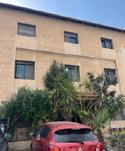

Morris Realty, Ltd.
054-723-3863 etamorrisrealty.co.il
OU ISRAEL CENTER 25
Eta
etamorrisrealestate@gmail.com Eta:
and the concept of holiness: the seventh day, Shabbat; the seventh month, Tishri, with its three festivals of Rosh Hashanah, Yom Kippur and Succot; the seventh year, Shemittah; and the Jubilee marking the completion of seven seven-year cycles.
These times (with the exception of Succot that belongs to both cycles) have less to do with history than with what, for want of a better word, we might call metaphysics and jurisprudence, ultimate truths about the universe, the human condition, and the laws, both natural and moral, under which we live.
Each is about creation (Shabbat, a reminder of it, Rosh Hashanah the anniversary of it), Divine sovereignty, justice, and judgment, together with the human condition of life, death, mortality. So on Yom Kippur we face justice and judgment. On Succot/Shemini Atzeret we pray for rain, celebrate nature (bringing together the lulav, etrog, hadassim, and aravot as the arba minim – the four species - is the only mitzvah we do with unprocessed natural objects), and we read the book of Kohelet, Tanach’s most profound meditation on mortality.
In the seventh and Jubilee years we acknowledge God’s ultimate ownership of the land of Israel and the Children of Israel. Hence we let slaves go free, release debts, let the land rest, and restore most property to its original owners. All of these have to do not with God’s interventions into history but with His role as Creator and owner of the universe.
One way of seeing the difference between the first cycle and the second is to compare the prayers on Pesach, Shavuot, and Succot with those of Rosh Hashanah and Yom Kippur. The Amidah of Pesach, Shavuot, and
Succot begins with the phrase “You chose us from all the peoples.” The emphasis is on Jewish particularity.
By contrast, the Amidah for Rosh Hashanah and Yom Kippur begins by speaking of “all You have made, all You have created”. The emphasis is on universality: about the judgment that affects all of creation, everything that lives.
Even Succot has a marked universalist thrust with its seventy sacrificial bulls representing the “seventy nations”. According to Zechariah 14, it is the festival that will one day be celebrated by all the nations.
Why the duality? Because God is both the God of nature and of culture. He is the God of everyone in general, and of the people of the covenant in particular. He is the Author of both scientific law (cause) and religious-ethical law (command).
We encounter God in both cyclical time, which represents the movement of the planets, and linear-historical time, which represents the events and evolution of the nation of which we are a part. This very duality gives rise to two kinds of religious leader: the Prophet and the Priest, and the different consciousness of time each represents.
Since the ancient Greeks, people have searched for a single principle that would explain everything, or the single point Archimedes sought at which to move the world, or the unique perspective (what philosophers call “the view from nowhere”) from which to see truth in all its objectivity.
Judaism tells us there is no such point. Reality is more complicated than that. There is not even a single concept of time. At the very least we need two perspectives to be able to see reality in three dimensions, and
26 TORAH TIDBITS 1564 / EMOR
that applies to time as well as space. Jewish time has two rhythms at once. Judaism is to the spirit what Niels Bohr’s complementarity theory is to quantum physics. In physics light is both a wave and a particle. In Judaism time is both historical and natural. Unexpected, counter-intuitive, certainly. But glorious in its refusal to simplify the rich complexity of time: the ticking clock, the growing plant, the ageing body, and the ever-deepening mind.
These weekly teachings from are part of his ‘Covenant & Conversation’ series on the weekly Torah teaching. With thanks to the Schimmel Family for their generous sponsorship, dedicated in loving memory of Harry (Chaim) Schimmel. Visit www.RabbiSacks.org







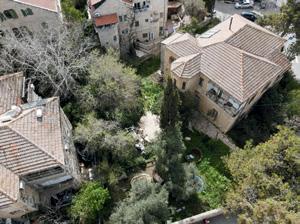


144 bottles of grape juice are purchased and brought to the Kever of Rabbi Shimon Bar Yochai. There, they bless the person on behalf it was bought for. Price per person $800. To purchase the grape juice segula go to www.omb.org.il. 1) Insert under comments "grape juice segula" 2) Hebrew name and mother's Hebrew name to daven for. 3) What to daven for. Ex: Zivug, shalom bayit, parnassah, health etc.
* 144 is equal to 2 x’s chessed.
* Rabbi Shimon Bar Yochai said “Viyesh Al Mi L’Smoch” There is someone you can trust.
In the Zchut of the Torah of Rabbi Shimon Bar Yochai. May your request be answered.
May we only hear, see and know of Simchas. May we see the coming of Moshiach now!



OU ISRAEL CENTER 27
who play the guitar to come visit hospitals and play for the patients. Please email office@omb.org.il or whatsapp 050-419-7775
NEW PROJECT PRE-SALE IN OLD KATAMON STARTING 2.45M nis Whatsapp +972 (0) 52-2636656 usa# 5164675892 , uk# 2037697899 1-5 BEDROOMS APARTMENT, ONLY 13 UNITS AVAILABLE , GREAT OFFER BAKA NEW UP COMING PROJECT IN BEITH LECHEM RD For more offers more Call now: 077-9973185 HIGH
3.5BR
SQM
FLOOR, 136 SQM,
- 15
SUCCAH, UPGRA DED +++
NEW OFFER KING DAVID CROWN LUXURY COMPLEX - TALBIEH
65% SOLD OUT!!
Gershon Agron 24, Mamilla - Jerusalem
3
ONLY AT
NIS !!
ONLY
UNIQUE GARDEN APARTMENT IN THE GERMAN COLONY 4 METER HIGH CEILINGS , GREAT POTENTIAL FOR THOSE LOOKING FOR 250-300 SQM
BEDROOMS , 2 BATH , 15 SQM SUCCAH
3.65M
PRIVATE INQUIRIES

PROBING THE PROPHETS
BY RABBI NACHMAN (NEIL) WINKLER Faculty, OU Israel Center
Guarding Sanctity
Many of us are familiar with this week’s Torah reading since it includes the section known as “parashat hamo’adot,” the section that contains the Torah’s most complete review of the annual chagim. This segment reviews the laws of the shalosh regalim and includes as well the observances followed of Rosh HaShanah and Yom Kippur. It is for this reason that we read this part of Emor both on Pesach and Sukkot and, therefore, its familiarity to us. Despite its familiarity, our ancient scholars did NOT focus upon the “parashat hamo’adot” when choosing a fitting haftarah for Parashat Emor. Instead, they chose to have us read from the 44th perek of Sefer Yechezkel, a selection that reflects the theme found in the opening section of our parasha, i.e., the laws that pertain to the elevated state of sanctity demanded of the Kohanim.
A simple reading of our haftarah teaches us of the greater requirements that would be demanded in the future Holy Temple and, specifically, the laws commanded to the priestly family to be followed in the holier Bet HaMikdash. Indeed, we might find the words of the prophet to be almost parallel to those we read in this parasha, e.g. their prohibition of defiling for the dead, the
limitation of whom they may marry, the obligatory garments to be worn during their service in the Beit HaMikdash, etc. In fact, Rav Soloveitchik comments that the haftarah does not only share a common theme with our parasha but its laws are almost identical with those of the parasha, having us wonder what Yechezkel might be adding to what we learned in the parasha!
The key to understanding what the navi hoped to relay to future generations might be found in the opening phrases of the haftarah where we hear Yechezkel declare how only the Kohanic descendants of Tzadok – those who “kept the charge of My sanctuary when Israel strayed from Me,” would be those who will serve Hashem in His sanctuary. The statement reveals Hashem’s insistence that only Kohanim who kept the purity of the priestly family over the years would be allowed to continue their service in Bayit Shlishi.
However, it is important to realize that our haftarah is only part of the navi’s prophecy – indeed, it first begins in the fifteenth verse of the 44th chapter – and we would fail to fully appreciate the significance of Yechezkel’s message to Israel if we do not read the p’sukim that “introduce” the haftarah’s message. After taking the prophet on a “virtual tour” of the future Mikdash, Hashem warns the navi to remember all of the laws and the warnings pertaining to the Temple that he had been taught. He then charged the prophet: “V’amarta el merri’ “ – to tell
28 TORAH TIDBITS 1564 / EMOR
the rebellious people of Israel – specifically the Leviyim and the Kohanim - who failed to “keep the charge of My sanctuary” and had defiled the Beit HaMikdash with their sinful behavior.
It is at this point, that our haftarah begins - when Hashem draws a contrast between the “rebellious” Kohanim and “V’haKohanim v”haLeviyim b’nei Tzadok,” - the righteous families of the priesthood who guarded the sanctity of the Mikdash. It is THEY who, in the future, would serve in the eternal Beit HaMikdash. The corruption of the priestly tribe is well-documented in the Tanach, both in the writings of the prophets and in the reports included in Sefer Ezra HaSofer. Rav Soloveitchik explained that many would have thought that in the ideal yet-to-be-built Temple, Hashem would not remove the priestly class entirely, as it had been the source of fraud and exploitation for so many years. Yechezkel arrives to tell the nation that the corruptive element would no longer serve G-d and those descendants of Tzadok who protected the sanctity of Hashem’s Temple, would, indeed, serve in the future Temple.
And it will be those righteous ones who would purify and elevate the Temple service, sanctifying it, as described in our parasha.
Rabbi Winkler’s popular Jewish History lectures can be viewed by visiting the OU Israel Video archive: https://www.ouisrael.org/video-library
The family of RABBI SHOLOM GOLD TZ"L are collecting memories/stories /videos etc ..of their father. Please email to: Goldofjerusalem@gmail.com

Capital Property Consultants and Lily Lewit present: 3 OUTSTANDING, EXCLUSIVE JERUSALEM PROPERTIES FOR SALE
BAKA
Original Arab/Templar house
550sqm plot
Building rights
Free-standing
Extremely quiet location
NORTH BAKA
Fabulous Arab house
650sqm of living space
Building rights
45 sqm store front with business license
Garden parking
GERMAN COLONY
Superb mansion
570 sqm recently built 11 Bedrooms 8 Bathrooms Quiet street off Emek Refaim 400sqm private garden

OU ISRAEL CENTER 29
more details: Call Rivka +972544407610 rivkasch@gmail.com Lily Lewit
For
+972505248930 lilylewit@gmail.com
LILY LEWIT ן”לדנ ץועייו ךווית טיול יליל property consultants


Bank transfer: Mercantile (17), Branch 642, A/C 79747843
Send Asmachta for tax receipt
Checks: “Yesh Ezra,” POB 31476, Romema, Jerusalem
Credit Card: Sara – 077-820-0196. Sun/Mon/Wed (10:15am-2.45 pm)
Inquiries: Menachem Persoff 050-570-1067 | menpmp@gmail.com

Many Anglo families moving in the new neighborhood Carmay-Hanadiv in Kiriat-Malachi Are you a passionate, energetic, and community-oriented Rabbi seeking a meaningful opportunity like no other?







Limited unique offer for the pioneers, in BEAUTIFUL brand-new apartments of the next BIG AngloIsraeli community.
Estimated Entry: Fall 2024.
SUBSTANTIAL SUBSIDIES for the first ten renters to contact us!
30 TORAH TIDBITS 1564 / EMOR
www.carmay-hanadiv.co.il // בידנה ימרכ :waze // COME AND JOIN THE NEW ANGLO-ISRAELI COMMUNITY IN CENTRAL ISRAEL carmay-hanadiv Living In The New Heart Of Israel
UNIQUE RENTAL OPPORTUNITY For more details,
whatsApp: R’ Moshe Marcus: 058-766-5967 SEEKING RABBI BUY WITH US SELL WITH US Tel +972 50 446 9515 www.israel -properties.com Israel is our home, our place, it belongs to all of us Israel Properties is here to help you find your home, your place where you belong THIS WEEK: Helping single mothers who are calling in that they have nothing to eat for Shabbat! See What We Do and to Donate: www.Yeshezra.org
please
HELPING THE HOME FRONT
THE NEEDY
ASSISTING
Together
we will win!
May Hashem protect our soldiers and bring them home safely!
The largest collection of exclusive Jerusalem properties is just one search away

Tsiyon Garami St, Pisgat Ze’ev Villa, 542 sqm plot, 230 sqm built, 9 rooms master suite, utility room, safe room, balcony and, huge garden, 2 parking spots, 2 rental units NIS 6,700,000

David Weiser 055-276-2960
Shlomo Benzaquen 052-601-4411

Baka

Historical Old Arab Garden apts, combine for 94 sqm. Each apt: ~47 sqm + garden, building rights. Investment/home. Needs reno. NIS 2.95M each, Both 5 85M Alyssa Friedland +972 54-668-4111


Arza St, Motza Ilit

Stunning 8-room duplex garden apt. High-end renovation, large garden, rental unit option, 2 parking, 2 storages, elevator. Priced to sell: NIS 6,750,000 Shlomo Benzaquen 052-601-4411

Mevo Hamatmid, City Center

Renovated 2-room, 44 sqm furnished apt with breathtaking view of Old City walls. Full amenities, pool, spa, gym 24/7 security. Prime location. NIS 2,790,000 Orna Even 054-621-6069



Yehoshafat, German Colony Gorgeous semi-detached Villa 7 bedrooms + garden, parking, elevator + separate rooftop apt. Price: 18,000,000 NIS ($4,850,000) Alyssa Friedland +972 54-668-4111

Ha'Palmach 137, Mevaseret Zion
Renovated semi-detached, 7 rooms, 5.5 bedrooms, 2.5 baths, garden/porch with view, 2 parking, accessible upper unit, sep. entrance to both floors NIS 4,690,000 Shlomo Benzaquen 052-601-4411

Sharon Sasson 050-912-1234




Ben Yehuda St, City Center, Entire building for sale in the heart of Jerusalem. Amazing investment opp! Residential, hotel and/or commercial. Approximately 4000 sqm building rights Judit Blumenfrucht 054-431-8814


Mevo HaMa'avak, French Hill Garden Home! 5 rooms + garden in tabu! Quiet, pastoral + amazing view! NIS 5,200,000 ($1,500,000) Alyssa Friedland +972 54-668-4111

Mitzpeh Habira 24 Bet, Mevaseret Zion

7-room semi-detached, 1 level (ground floor), 2 apts (main 5 rms. & rental unit 2 rms.), 142m² built, 600m² plot, huge yard/garden! Priced to Sell! 4,390,000 NIS Shlomo Benzaquen 052-601-4411
www.remaxjerusalem.com

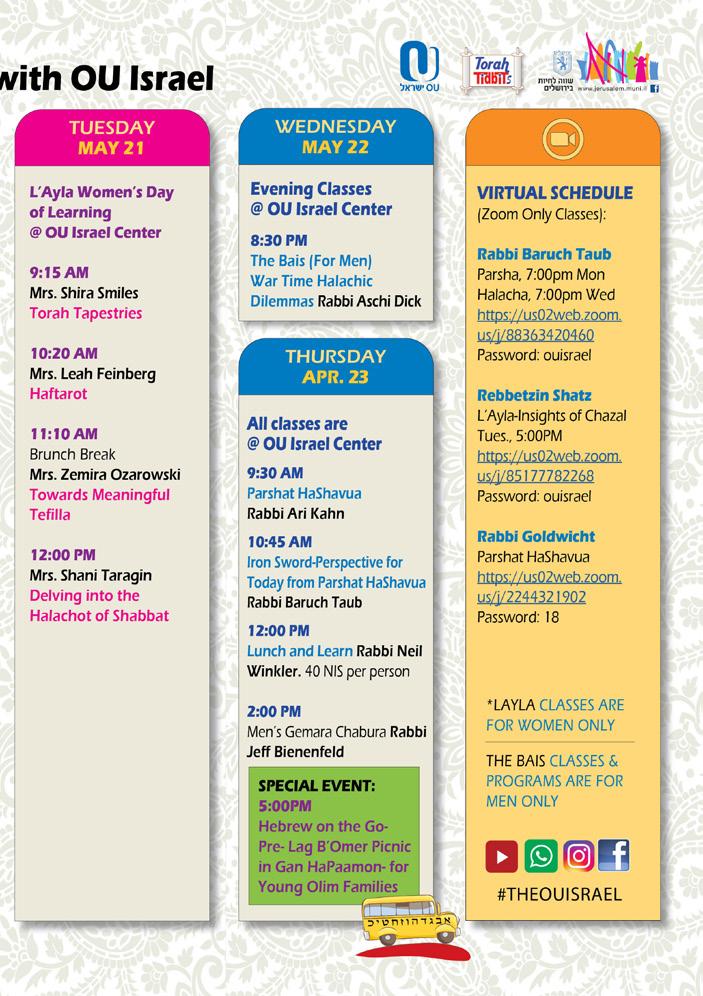
Yachad Teens!

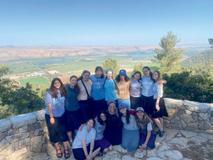






•Dates: July 9-25, 2024
•Location: Yad Binyamin
•Director: Emily Stemp





•Dates: July 9-28, 2024
•Location: Bet Meir (NCSY Kollel Campus)
•Director: Rabbi Yosef Ginsb


34 TORAH TIDBITS 1564 / EMOR
Town Hall and Introductory Program FOR PARENTS AND THEIR TEENS F o r E n g l i s h s p e a k i n g t e e n s w i t h s p e c i a l n e e d s ( A g e s 1 3 - 1 8 ) S u n d a y , M a y 1 9 a t 6 : 3 0 P M O U I s r a e l C e n t e r , 2 2 K e r e n H a Y e s o d , J e r u s a l e m T e e n s h a v e f u n w i t h t h e Y a c h a d I s r a e l S t a f f w h i l e p a r e n t s j o i n o u r D i r e c t o r f o r a T o w n H a l l t o d i s c u s s h o w Y a c h a d c a n b e s t s e r v e t h i s g r o u p . RSVP:AviyahAtkin - Atkina@ou.org - 0532832010 Yachad Israel’ s New Initiative: Participation at future Yachad Teen Programs will require an intake ummer 2024
For More info Visit Chai.ncsy.org NCSY Chai is a project of NCSY Israel FOR 9TH-12TH GRADE BOYS & GIRLS LIVING IN ISRAEL
For Sale: Ben Maimon, 4 rooms, 113m, 2 bathrooms, porch, 1st floor, elevator, 6.2 million NIS
Smadar 050-3114040 // 02-642-4329 smadi_bida@walla.co.il
PRI HADASH
WOMEN'S WRITING WORKSHOP AT THE OU ISRAEL CENTER
Monday mornings 10.30-12.30
For more details, call Ruth 02-628-7359 or Judy 054-569-0410
Tzitzit tying at the OU Israel Center with Ruti - no experience needed and GET FIT WHILE YOU SIT: Exercise for ladies Sundays 12:45-1:30pm at the OU Israel Center Sura Faecher 0504153239 matters. that voice, afterlife. I canFor no foland comreal amazing teachreceived us
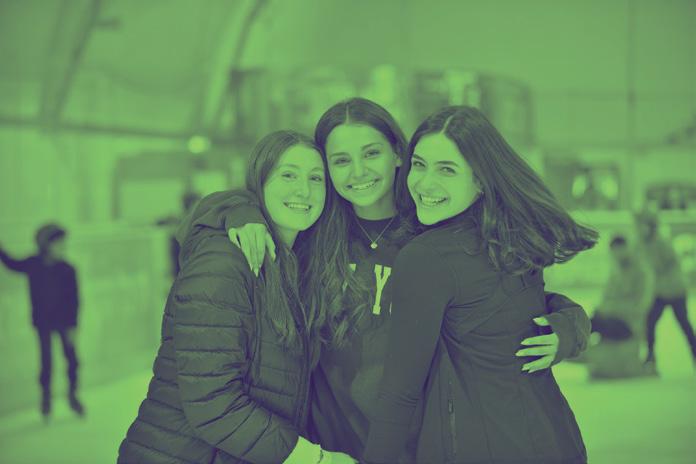

Tuesday JUNE 17-18, 2024 S o m e t h i n g
I s c o m i n g



OU ISRAEL CENTER 35
BIG

RABBI SHALOM ROSNER Sefirat Ha’omer
Maggid
Senior Ra"M, Kerem B'Yavneh
49 Meaningful Days
The early Hasidim interpreted the term "םכל םתרפסו" - as םולהיו ריפס ןושל . The days between Pesach and Shavuot are days that enlighten us like precious stones (ריפס -sapir is a sapphire). Each day has a special and unique quality.
48 CHARACTERISTICS TO ACQUIRE TORAH
This idea is based on a Mishna in Pirkei Avot (6:6) that enumerates 48 ways in which Torah is acquired. תינקנ הרותהש םירבד ח”מ םהב. Each day reflects a different midah (characteristic) and we are to master them all. There is one problem with this idea, however, in that there are 49 days of the omer and only 48 characteristics enumerated. What is one to do on the 49th day of the omer?
49TH DAY FOR REVIEW
The Chidushe Harim suggests that the last day is dedicated to הרזח - reviewing what was acquired on each of the previous 48 days. Does one day of review suffice?
49TH DAY FOR PRAYER
Rav Asher Weiss offers another explanation. In the third to last daf of Shas (Nida 70b) the people of Alexandria asked Rabbi Yehoshua Ben Chananya how one can acquire wisdom. Rabbi Yehoshua responded that one needs to toil and work hard to acquire Torah knowledge. The people responded that many have done so and not
succeeded. Rabbi Yehoshua responded that one needs to do their hishtadlut but also has to pray. ולש המכחהש יממ שקבי – ask the One who controls all wisdom.
GIFT TO MOSHE
Moshe Rabbeinu studied the Torah for 40 days and the Yerushalmi (Horayot 18:) states that he kept on forgetting the Torah. Finally, Hashem gave him a gift- of memory. Moshe Rabbeinu, who was on a higher level than all other men, also struggled to acquire Torah. Only with siyata d’shmaya, can one succeed. That is why we need to pray along with our effort.
אתה חוננתנו
In a similar manner, the Levush asks a question about a tefilla we recite on Motzei Shabbat. In the shemona esre we insert the tefilla of ונתננוח התא. It seems like the addition is superfluous. We first state םדאל
תעד – you provide wisdom to man. Then we state ךתרות
התא – You provide us with knowledge of the Torah. General knowledge is something that all mankind can obtain. Knowledge of Torah, however, is reserved to the Jewish nation. On Motzei Shabbat when we distinguish between kodesh and chol, we require knowledge of Torah and ask that we be granted that since such a distinction is only comprehensible on a spiritual level.
36 TORAH TIDBITS 1564 / EMOR
Rav Kehilla, Nofei HaShemesh
Shiur, Daf Yomi, OU.org
ןנוח התא
עדמל ונתננוח
Torah knowledge is a gift from God and we need to pray to request that we be granted that gift. Therefore, the first 48 days of the omer parallel the 48 characteristics through which we can acquire the Torah. The 49th day is dedicated to prayer. ולש המכחהש יממ שקבי. If we truly want to acquire Torah, we need to combine our pursuit with prayer.
In all areas of life we need to do all we can (תולדתשה) and combine it with sincere prayer. Whether we seek to obtain Torah knowledge, health, wealth, provide a proper upbringing for our children – prayer needs to be a part of the equation. May we combine our efforts to achieve along with sincere prayer to the One above, so that we merit realizing our full potential. May we be able to count each day and make each day count!


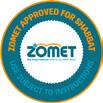


OU ISRAEL CENTER 37
REBBETZIN SHIRA
Faculty, OU Israel Center
SMILES
Gearing for Greatness
Our parashah discusses the specific laws that pertain to Kohanim, the priests, and to the Kohen Gadol, the High Priest. We are so familiar with this title, Kohen Gadol, but it is actually a curious description. What makes this Kohen “gadol,” greater than his brethren? What is the nature of this “gadlut,” this greatness?
The midrash in Vaykira Rabbah explains that the Kohen Gadol is greater in 4 distinct ways: in his strength, wisdom, beauty and wealth. As an example of Ahron HaKohen’s superior strength, the midrash cites that he lifted 22,000 Leviim and waved them in all four directions in one day! According to this calculation, assuming he did not rest at all, it would mean that he lifted 15 Leviim per minute. However, Rabbeinu Bechaye maintains that this was a miraculous feat. If so, how can the midrash then cite this as a prooftext for Ahron’s strength? Rav Chaim Shmuelevitz explains that although it was a miracle, it was only made possible because Ahron invested his entire being into this effort. Thus, we can infer that ‘strength’ is determined by one’s endeavors, when one uses his abilities to the maximum extent that he is able. Likewise, “gedolei Yisrael,” as our great Torah leaders are called, are those who invest the entirety
of their being in what they do and therefore merit tremendous siyata d’shmaya, thus achieving far greater things than an average layman. Rav Gifter zt”l would frequently say, “The minimum Hashem wants from us is the maximum that we can do.”
The Torah recounts the incident of Moshe Rabbeinu’s salvation by bat Paroh in a way that demonstrates this concept beautifully. She saw the baby in a basket on the Nile, “vatishlach et amata.” (Shemot 2:5) Rashi interprets amata as she reached for the baby and her hand miraculously extended many more amot until she was able to take him from the basket. Clearly, her effort to do her utmost to save the child effected an outcome coordinated from Above. Thus, Chazal teach us, “baderech she’adam rotzeh leilech bo molichin oto - the path that a person wants to travel on, is the path that Hashem guides him down.” (Makkot 10b)
This is the takeaway, learns Rav Scheinerman in Ohel Moshe. It is our task to yearn for greatness, even beyond our perceived abilities. We must “extend our hand,” we must try and reach for ever higher spiritual goals. Indeed, Chazal teach us, “kol adam miYisrael chayav lomar matai yagi’u ma’asai le’ma’asei avotai – every member of the Jewish people is obligated to say, “when will my actions reach the level of the Patriarch’s actions?”” (Tanna d’vei Eliyahu chapter 25:1). As the language of Chazal is always precise, notice that the word used is “obligated.” Every person is duty-bound to reach beyond himself, it is
38 TORAH TIDBITS 1564 / EMOR
not something reserved for only the righteous among us. The Saba of Slabodka was known for his statement, “I would never ask myself if I was able to do something, rather, I would ask myself if I was obliged to do something. If I am obliged to do something, then I can do it.”
The Kohen Gadol was a model for all of us for what it means to move outside our comfort zones to reach levels of greatness. When we yearn, strive and work towards that goal, Hashem will grant us the gift of achievement.


ANGLO- SAXON-JERUSALEM
ISRAEL’S LEADING REAL ESTATE NETWORK
FOR SALE IN JERUSALEM:
GREAT OPPORTUNITY IN OLD TALPIOT
5-room apt., 1st floor, terrace, “Mamad”, 3 exposures, elevator, will be ready Summer 2025. Near shops, schools, public transportation and more... Exclusive! Anita 053-6318355
SANHEDRIA HAMURCHEVET
Unique & large 6-room apartment 1st floor, access to garden, well maintained, private storage, Sukkah terrace, additional separate unit with private entrance. Exclusive! Itsik 055-4318147
FOR RENT IN JERUSALEM: IN THE HEART OF BAKA
Beautiful 5.5-room garden apartment, in an Arab-style house. Next to Derech Beit Lechem shops and restaurants. Private entrance, 152 sq meters, stunning large garden, lots of light, Exclusive! Nava 053-6642512
3 Moshe Hess St., Jerusalem 0778038511

OU ISRAEL CENTER 39

RABBI JUDAH
Executive Director, Camp HASC
RABBI JUDAH MISCHEL
Author of Baderech: Along the Path of Teshuva (Mosaica 2021)
Executive Director, Camp HASC
MISCHEL
Author of Baderech: Along the Path of Teshuva (Mosaica 2021)
Words that Shine
Legendary scholar, educator, author, historian Rav Berel Wein’s rabbinic career spanned Chicago, Miami, and the Orthodox Union, before he founded Congregation Bais Tefillah and Yeshivah Shaarei Torah in Monsey, New York. Earlier, when Rabbi Wein was visiting Monsey, he davened at the fledgling Community Synagogue which was under the leadership of Rabbi Dr. Moshe David Tendler. One evening, Rabbi Tendler was out of town, his illustrious father in law, the gadol ha-dor, Reb Moshe Feinstein was present at shul. Rabbi Wein describes that evening:
“There were about twelve people there. Most of them had come in off the street just to say Kaddish. Between Minchah and Maariv there was a short break and Reb Moshe would not allow it to be frittered away. So he took a Chumash from a shelf and began teaching from it to the small crowd. He read each verse and then translated it into Yiddish with such a simple quality. He didn’t say any deep Torah thoughts, no deep analyses from the commentators; just the plain words. Vayomer — un er hot gezokt, “and he said….” But he spoke in such a way that he wasn’t talking down to anyone. Great people have that ability to talk to everyone: children, teenagers, adults.”
“Speak (emor) to the Kohanim, and say (v’amarta) to them….” [21:1]
Rashi teaches us that the apparent repetition of “speak to” and “say” teaches us
, “The adults should l’hazir, ‘warn’ the young.” As the older, more experienced Kohanim, they were to instruct the younger generation in the ways of the priesthood. The Lubavitcher Rebbe explained l’hazir as being etymologically connected with the word zohar, ‘illumination’, and he extended this insight into the work of anyone in a position to influence others or simply share positive values and Torah ideas — especially parents and teachers. The directive of l’hazir, ‘to issue warning’ to others regarding maintaining ritual purity, is not just about what we impart, but how we transmit those values; how we educate, view, interact and aspire to influence others. To influence the listener positively, our admonition, our “l’hazir”, must express zohar; our words must ‘shine’ and illuminate him with positivity.
Hundreds of Reb Moshe’s halachic opinions are collected in his nine volume magnum opus, Igros Moshe, spanning a wide range of sugyos, questions and issues. Among the piskei halacha and ethical directives, Reb Moshe describes what ought to be the primary goal of any teacher (or parent!) in transmitting Torah values:
One must realize that teaching Torah is a mission unlike teaching other subjects. When
40 TORAH TIDBITS 1564 / EMOR
ןרהא ינב םינהכה לא רמא השמ לא ׳ה רמאיו …םהילא תרמאו
לע םילודג ריהזהל
םינטקה
it comes to secular studies, the teacher must explain the material so that the students understand the information; to the teacher, it is irrelevant whether or not the material penetrates the students’ hearts and souls to the point that they will practice what has been learned. With regard to Torah, the teacher must see to it that the talmidim will absorb what they have learned so that they will perceive in their hearts and souls that Torah is our purpose, and the most important thing in life (Yoreh De’ah, III, #71).
In 1952, a young, charismatic Reb Shlomo Freifeld was chosen to join a small mission of yeshivah students to Eretz Yisrael, to meet with Gedolei Yisrael, run programs and strengthen Torah. The bachurim engaged in a flutter of activity, working day and night on a very tight schedule. Somehow however, it seemed the future Rosh Yeshiva and founder of Sho’r Yashuv was always holding up the group… Reb Shlomo was always shmoozing! It didn’t matter who he met baderech, on the way. Whether with Talmidei Chachamim, elderly shop owners, children on the bus, policemen, schnorrers or fellow yeshivah students, Reb Shlomo was shmoozing.
When the friends became slightly frustrated, Reb Shlomo explained that he had recently heard a story about Rav Leizer Levin, who served as the chief Rabbi of Detroit for more than 50 years. When Rav Levin was considering leaving his small Lithuanian shtetl and immigrating to the United States, he went to the Chafetz Chaim for advice and a brachah. The Chafetz Chaim sent him off to America, directing him with a holy mission: “Reb Leizer, gei red tzu Yidden, go speak to Jews!”
Reb Shlomo turned to his friends, “Eretz Yisrael is filled with Yidden! Everywhere
FOR RENT
GERMAN COLONY
Great location, duplex 4.5 rooms, 109m, ground floor, large sukkah balcony 40m, renovated, master bedroom, parking, exclusive, 12,000 NIS/month
FOR SALE
ARNONA
Nice 4 rooms, 93m, Shabbat elevator, balcony, good shape, large living room, master bedroom, quiet, parking, storageroom, 3,700,000 NIS
KIRYAT SHMUEL
Large 4 rooms, 96m, Shabbat elevator, balcony with view, good shape, large living room, master bedroom, parking, 3,900,000 NIS
RASKO, CLOSE SAN SIMON PARK
New 5 rooms, 124m, Shabbat elevator, 2 balconies with sukkah, panoramic view, large living room, master bedroom, quiet and lit, parking, great price, 4,600,000 NIS
28, Kovshei Katamon Street, Jerusalem Tel: 02.5633008 - www.ben-zimra.com
I turn, I am surrounded by Jews to meet and speak with. I am so excited to fulfill the instructions of the Chafetz Chaim… and speak to Jews!”
May the instruction of the Kohanim in Parshas Emor awaken our efforts to share great light and shine forth the illumination and sweetness of Torah with all whom we meet.
LIFE SETTLEMENTS
Do you have a life insurance policy you:
• No longer want?
• No longer need?
• Can no longer afford the premium?
• Could you use extra money instead of keeping your policy?
I can guarantee that if you qualify with the underwriting process I can get you more money than if you cash it in with the company.
Please contact Moshe Russell at: Buymypolicy32@gmail.com
OU ISRAEL CENTER 41

SIMCHAT SHMUEL
BY RABBI SAM SHOR Program Director, OU Israel Center
This coming Wednesday we will commemorate Pesach Sheini, literally the second Pesach. The Torah instructs us in Parshat BeHaaalotcha, regarding this second opportunity for those who were unable to offer the Korban Pesach at its proper time to be able to participate and fulfill this mitzvah.
Since there were some men who were unclean, having come in contact with a corpse and could not offer the Korban Pesach on that day. Appearing that same day before Moshe and Ahron, those men said to them, “Unclean though we are by reason of a corpse, why must we be prevented from presenting Hashem with an offering at its set time with the rest of the Jewish People?” Moshe said to them, “Imdu- Stand by, and let me hear what instructions Hashem gives for you.” Hashem spoke to Moshe, saying: Speak to the Jewish people, and say: When any of you or of your posterity who are defiled by a corpse or are on a long journey would be unable to offer the Korban Pesach to Hashem, they shall offer it in the second month, on the fourteenth day of the month, at twilight. They shall eat it with unleavened bread and bitter herbs, and they shall not leave any of it over until morning. They shall not break a bone of it. They shall offer it in strict accord with the law of the Korban Pesach...”
The Chidushei HaRim, the first Gerer Rebbe zy’a, explains that the word Imdu does not mean to stand by and wait, rather it means Imdu stand up, even though you may have been unable to perform the mitzvah
initially, don’t fall into despair. Imdu- stand up- Hashem gives us the opportunity for a second chance!
So too in our days, in the absence of the Korban Pesach, there is an eternal message of chizuk, inherent in these verses, and represented by this sacred day of Pesach Sheini. Imdu- Stand up! Each of us can stand upright once again before HaKadosh Baruch Hu through teshuva and tefila. It is never too late!
This important idea is similarly reflected and developed even further in a powerful teaching from Rebbe Naftali Tzvi of Ropschitz, zy’a. The Ropschitzer taught that a person might think that as a result of their many mistakes or flaws, that there is no hope for them, that it is impossible for them to turn their lives around, to improve their circumstances. Giving up, selling oneself short, explains the Ropschitzer, is not only counterproductive, but is also an act of great heresy! Teshuva, the opportunity for growth and change,the opportunity to move forward, and leave our mistakes or missed opportunities in the past, is a great gift from Hashem! One who feels that they are not capable of teshuva, explains the Rebbe, is not simply selling himself short, but rather denying the endless kindness, compassion and love that the Ribono Shel Olam has for each and every member of Klal Yisrael.
The message of Pesach Sheini, is precisely this idea, to leave behind those past mistakes or missed opportunities, and move forward and embrace the potential for growth and
42 TORAH TIDBITS 1564 / EMOR
success, to embrace the gift of teshuva, to tap into our innate strength that Hashem has endowed each of us with, and in so doing transform ourselves and the entire world.

Be’er Tziporah a"h - Bottled Water Gemach
Walking down King George St. in Jerusalem and want a cold bottle of water?
Come help yourself to a bottle at 52 King George.
In loving memory of Yoni’s wife Tziporah a"h, a true Eishes Chayil, always full of chessed, kindness and laughter, and brought life and strength to so many people, that she touched! She was like Aron, who loved peace and pursued peace.

Yoni thanks Hashem for having the opportunity of having Tziporah in his life, to learn of her caring, patience and happiness, to overcome her challenges. May Tziporah's Neshama be a light onto the world, in a time of darkness, and may her Neshama shine to Gan Eden. Yoni misses Tziporah with tears in his eyes, as Hashem gave him a gift, a crown jewel, now he returns her to Hashem. With thanks and Toda. Love, Yoni
To help refill the supplysend tax deductible donations for Be’er Tziporah a"h Bottled Water Gemach to Chabad of RechaviaRabbi Yisroel Goldberg email
Rabbi@JerusalemChabad.org 02 800-1717
www.JerusalermChabad.org/DonateShekels

OU ISRAEL CENTER 43
בוט יכ 'הל ודוה

GEULAS YISRAEL
BY RABBI MOSHE TARAGIN R am, Yeshivat Har Etzion YISRAEL
Moral Relativism and the War in Israel
This war has multiple layers. We are battling homicidal enemies on two borders whose stated aim is to erase Israel from the map. Additionally, we are facing a global outbreak of rabid antisemitism. Calls of “death to Jews” have become normalized.
Any attack upon the people of Hashem is a chillul Hashem. That this horrific massacre occurred on Shabbat and on Simchat Torah exacerbates the desecration of Hashem’s name. Hundreds of years ago in France, during the Crusader invasion, as Torah scholars were being murdered, the author of the Tisha b’av kinah entitled ינממ ושירחה הרבדו pleaded with the Torah to intercede with Hashem and implore Him for mercy:
We also plead with Torah to intervene, and to solicit Hashem for mercy: for His people and for the repair of the despicable chillul Hashem of October 7th.
Beyond the military, antisemitic, and theological aspects of this war, there is a fourth tier. We have been thrust into a vicious cultural war. Over the past two decades our culture has shifted, traditional values have eroded, and society has been plunged into an identity crisis. Hyper-liberalism has abolished classic values replacing them with wokism and radical progressivism. Strangely, these
modern ideologies have been weaponized against our people. Much of the antisemitic vitriol stems from college students who have been reared upon this new value system.
All this isn’t surprising. We were selected by Hashem to inspire humanity toward a lifestyle of monotheism and morality. Through our religious behavior we showcase the nobility of a life of commandment and commitment. Not only do we model religion, but we are also meant to fashion a culture of spirituality and values. When the surrounding culture ruptures and its values become corrupted, we offer an alternative model. We are responsible for cultural reconstruction. Even if the degraded cultural values aren’t inherently immoral, they still threaten the fabric of society and its moral fiber. Just as it is our historical task to repair immoral behavior it is also our mission to repair broken cultures.
RADICAL HUBRIS
The beginning of Parshat Noach portrays a debauched society which had fallen into complete and total moral collapse. Hashem decided to wipe them off the planet and reboot both humanity as well as the natural order.
The same parsha, though, closes with a very different scene. The generation of migdal Bavel wasn’t morally degenerate or rebellious. Having fashioned the first
44 TORAH TIDBITS 1564 / EMOR
רפעב ישלפתהו קש ירגח הרות הרות
industrial revolution in history, they became intoxicated with their own human prowess. Their generation was the first to manufacture bricks and the first to urbanize. Empowered by technology and emboldened by their success, they abandoned dependency upon Hashem. Though they didn’t commit grave sins, they crafted a culture of narcissism and self-importance. A few years after the tower fell, Avraham emerged to revolutionize religious consciousness. He repaired their broken culture.
About two thousand years later a different decayed culture demanded reconstruction. Amassing boundless wealth, Shushan degenerated into a culture of ostentation and exhibitionism. During the six months they luxuriated on marble beds and binge drank from golden chalices, no one worked or shouldered any responsibility. An endless party in open display in the royal courtyard.
Esther and Mordechai renovated this rotten culture of opulence and voyeurism. Esther was nicknamed Haddasah which is a fragrant bush. Mordechai’s name sounds similar to a spice called ‘mar d’ror”. Together they refreshed a rancid culture.
Some generations spiral into a moral abyss. Others develop unhealthy social and cultural norms. Either way it is our mission to protect humanity against its lesser self.
Evidently, we stand at a cultural crossroad. Something is happening to our culture and somehow it is intertwined with our struggle to return home to Israel. Eventually we will triumph. We will convince the world that Hashem awarded us this Land. We will also repair the broken culture around us.
How did our culture break and how has it been weaponized against us?

077-2050015 052-2678749
golanechasim@gmail.com Meir Golan
Old Katamon: 4-room apartment in a small and quiet street, 101 sqm, renovated, very bright and airy, master bedroom, Safe room (mamad), sukkah balcony, view, elevator, 3,400,000 NIS

RASCO: new 4 room apartment, 95m, master suite, elevator, balcony, very nice view 2,950,000 NIS
ARNONA: 4-room apartment, 108m, master suite, balcony, storage, Shabbat elevator, private parking, 3,290,000 NIS
Old Katamon: 4-room apartment, 90 sqm, well split, bright, airy, sukkah balcony facing a magnificent panoramic view, 3 exp Shabbat elevator, parking, 3,290,000 NIS
ARNONA: 4-room apartment, 90m, beautifully renovated, master suite, balcony, storage, Shabbat elevator, private parking 3,250,000 NIS
Old Katamon: Spacious 3-room apartment in a very quiet street, 75 sqm, sukkah balcony facing a green and pastoral view, 3 exp. Shabbat elevator, private parking, storeroom, 2,690,000 NIS
BAKA: New 4 room apartment in a new building, 101m, master suite, storage, Shabbat elevator, private parking, Sukkah balcony in process of being added, 3,890,000 NIS
BAKA: New 4 room apartment in a new building, 88m, master suite, storage, Shabbat elevator, private parking, 3,950,000 NIS
OLD KATAMON: 5-room garden apartment, 125m, large garden + separate unit for rent or for guests, balcony, storage, 5,190,000 NIS
RECHAVIA: 4-room apartment, 92m, Suka balcony, Shabbat elevator, fully accessible, private parking, storage 4,400,000 NIS
REHAVIA: New garden apartment, 98m, garden, 50m, full accessibility, private parking, 5,390,000 NIS
ARNONA: 5-room apartment, 120m, balcony, elevator, fully accessible, private parking, storage 4,350,000 NIS
BAKA: 5-room garden apartment, 140m, master suite private parking, storage, full of light, nice garden, 6,000,000 NIS
SHAAREI CHESED (RECHAVIA): 4-room apartment, 123m, balcony, extraordinary view, Shabbat elevator, fully accessible, private parking, 5,590,000 NIS
OLD KATAMON: Spacious new 5-room apartment, 140m, terrace, underfloor heating, Shabbat elevator, 2 parking, 6,300,000 NIS
NORTH TALPIOT (CASPI STREET): New garden apartment, 5.5 rooms, 165m, 80m garden, architecturally renovated, underfloor heating, central air conditioning, parking, 5,890,000 NIS
KIRYAT SHMUEL: New penthouse, 230m, full accessibility, private parking 13,290,000 NIS
FOR RENT:BAKA: nice 4-room apartment, 82m, beautifully renovated, master suite, air conditioners, balcony, second floor, elevator - fully accessible, storage, 8,000 NIS
THREE AGENTS OF POSTMODERNISM
The contemporary “dissolution” of traditional values was caused by three events over the past three centuries.
Democracy and Capitalism revolutionized the modern world, by replacing oppressive systems with empowering ones. These potent revolutions unleashed immense human potential, dramatically improved the quality of life, and restored the dignity of human experience. However, these benefits came at a steep cost to our traditional value system. By stressing the individual over the collective, modern society glorified personal choice and personal expression. National, communal, or collective identities which preach traditional values have become disregarded. To each his own or her own. Without strong communal or national identity, traditional values such as family and morality erode.
OU ISRAEL CENTER 45 Meir Golan
Secondly, the world is still suffering collective PTSD from the horrors of the 20th century, during which humanity suffered from violent attempts to place loyalty to State above personal conscience. Haunted by the crimes of Nazism and Fascism, modern society recoils at any attempt to impose common or universal values. Any attempt to encourage conformity to common values smells like odious Fascism.
The internet revolution has further dissolved our traditional value system. Social media, in particular, offers virtual communities to replace actual ones. Without real communities and real neighbors, it is difficult to develop loyalty to family and loyalty to community. To each his own. To each her own.
These three dynamics have created a modern jungle teeming with moral swirl. Suffering through an extended identity crisis, the younger generation feels lost and bewildered. Sadly, when society feels bewildered, they look for scapegoats to assign blame. Jews have always provided easy scapegoats.
The fact that we can now defend ourselves in our own country is even more riling to our enemies. The scapegoat has horns and can now fight back. Our haters are furious.
MORAL RELATIVISM
Our confusing postmodern culture has generated a dangerous theory called moral relativism. Moral relativism asserts that moral truth isn’t absolute or universal but is
Jewelry, watches, sculpture - capture and save your memories Nostalgia can transport us to those special moments in life.
COLLECTORS...
Every Collection – Every Story –Uniquely Yours Create an exquisite narrative of your collecting journey. Discover more: www.forcollectors.international Contact: eveblack@forcollectors.international
subjective and is merely a social construct. What is considered morally right or wrong varies, depending upon cultural norms, personal beliefs, and historical contexts. The boundary between good and devil has been erased.
We watched in horror as cowardly and confused University Deans from whom we naively expected more, defended calls to murder Jews because every statement must be assessed “in context”. This was the ugly and grotesque face of moral relativism at its worst.
Dishonesty prevents us from standing in the presence of Hashem. Dovid Hamelech describes honesty as the core trait granting us entry into the precincts of Hashem:
Intellectual honesty is crucial for religious conscience and for deeper understanding of Torah wisdom.
Chazal though, speak not about an individual who is dishonest but groups of people who lose sight of truth. The gemara in Sotah (42a) warns that a “band of liars” aren’t welcome in Hashem’s presence:
Our society has become a
, a culture of photoshopped truths and false narratives. Social media has become a cacophonous chamber of lies, propaganda and hate. When truth fades, conversation collapses. Without healthy and substantive conversation all communication fails. Unable to agree even to baseline truths we default to shouting slogans and to spewing hatred. As the social fabric punctures society splinters into warring factions. Welcome to the jungle of fiction and lies.
46 TORAH TIDBITS 1564 / EMOR
ךלוה ךישדק רצחב ןוכשי ימו ךילהאב רוגי ימ ובבלב תמא רבודו קדצ לעופו םימת
לש תכ..הניכשה ינפ תולבקמ ןיא תותכ עברא םינרקש
לש תכ
םינרקש
Zecharyah promises that one day, Yerushalayim will be crowned as the city of truth and honesty. Humanity will assemble in the city of Hashem to embrace the Shechinah and applaud God’s children. The lies will fade and the culture will be repaired. Truth will reside in Yerushalayim. Not relative truth but absolute moral truth. Not human fiction but the presence of Hashem- the ultimate and only תמא





Rabbi Taragin’s new book about the war in Israel ‘Dark Clouds Above, Faith Below’ in bookstores, or at: https://www.amazon.com/dp/ B0CZ7N8ZJB or: https://kodeshpress.com/product/ dark-clouds-above-faith-below/







OU ISRAEL CENTER 47
הרתסהה ךותמ הנומא הרתסהה ךותמ הנומא Dark Clouds Above, Faith Below ark Clouds Above, Faith Below Rabbi Moshe Taragin Nothing could have prepared us for history of our people. Dark clouds have being severely tested. Faith and Meaning can be found in the Redeeming history long process,
ךותב יתנכשו ןויצ לא יתבש קוקי רמא הכ קוקי רהו תמאה ריע םלשורי הארקנו םלשורי שדקה רה תוא-בצ DR. AARON JESIN Canadian Physician Over 10,000 britot! From Toronto, Canada, now residing in Bet Shemesh Serving Jerusalem, the Mercaz, and all places between! www.DrJesin.com | 052-399-4313 תמישרב ךמסומ להומ לארשיל תישאר תונבר Flying Soon? Travel with Confidence 1UniTravel - Medical Insurance at great prices Choose from multiple options 1unitravel.brokersnexus.com 1UniSim - Sims for USA and Worldwide Starting at $40 sales@1unisim.com Call 077-400-3199 or USA 718-715-0001 NAHARIYA STARTING AT 1.69M NIS KETER ADVISORS: THE CROWN JEWEL OF ISRAEL REAL ESTATE 3 BEDROOMS 111 SQM + 12 SQM PORCH 4 BEDROOMS 129 SQM + 18 SQM PORCH INCLUDES: SHABBAT ELEVATORS + STORAGE ROOM + 1 SPOT PARKING (4 BEDROOMS = 2 SPOTS) + CENTRAL AC UNIT A B O U T T H E P R O P E R T I E S : S T A R T I N G A T : 3 BEDROOMS 1 69M NIS ($458K) 4 BEDROOMS W/SEA VIEWS 1.9M NIS ($515K) BAT YAM - FIRST LINE - ON THE BEACH 3 BEDROOMS 104 sqm + 12 sqm Balcony STARTING FROM 3 21M NIS -------------------------4 BEDROOMS 125 sqm + 12 sqm Balcony STARTING FROM 3 4M NIS -------------------------PENTHOUSE - 170sqm + 56 sqm Balcony STARTING FROM 6.1M NIS (2 LEFT) -------------------------ALL APARTMENTS - PARKING & MACHSAN ONLY 8 APARTMENTS LEFT 2 BEDROOMS & 3 BEDROOMS -------------------------ALL APARTMENTS - PARKING & MACHSAN ARNONA , JERUSALEM - NEW! RA’ANANA NEW - STARTING AT 3.11 M NIS IL: 972.52.682.9367 info@keteradvisors com US: 786.385.8859 www keteradvisors com Actual View NORTH NETANYA - STARTING AT 3.21M NIS Izzy Leizerowitz Broker Fee: 2% + VAT DID YOU KNOW YOU CAN USE YOUR IRA AND 401K FUNDS TO BUY INVESTMENT PROPERTY IN ISRAEL WITHOUT TAX PENALTIES? WE DO PROPERTY MANAGEMENT WHILE YOU ARE AWAY / LONG-TERM RENTAL SHORT TERM RENTAL / DURING CONSTRUCTION T I B E R I A S - L A K E K I N N E R E T - F R O M 1 . 7 M N I S LUXURY - BOUTIQUE BUILDING 2 B E D R O O M S F R O M 2 . 9 M N I S 3 B E D R O O M S F R O M 3 . 1 M N I S 4 B E D R O O M S F R O M 3 . 7 M N I S + I N D O O R P A R K I N G + S T O R A G E R O O M 2 B E D R O O M S F R O M 3 . 1 1 M N I S 3 B E D R O O M S F R O M 3 . 2 6 M N I S 4 B E D R O O M S F R O M 4 . 1 M N I S + I N D O O R P A R K I N G + S T O R A G E R O O M 4-room apartment, 136 square meters, fourth floor, master bedroom with shower toilet and walk-in closet, bathroom, storage room and private parking

HAFTORAH
BY REBBETZIN DR. ADINA SHMIDMAN INSIGHTS
Looking Back Moving Forward

HAFTORAH PARSHAT EMOR - YECHEZKEL 44:15-31
We read in this week’s Haftorah of the prophet Yechezkel’s instructions to the Kohanim in anticipation of their service in the Third Beit HaMikdash. Yechezkel details the type of dress, expected conduct and ritual tasks that the Kohanim will be obligated to perform. His directives repeat the list enumerated in the Torah, but Yechezkel also adds several more obligations. Why? Wouldn’t the existing instructions to the Kohanim be enough? Why did Yechezkel find it necessary to add to the already long and detailed list enumerated in this week’s Parsha?
Yechezkel identified a challenge associated with the resumption of the holy rituals of the rebuilt Beit HaMikdash; rebuilding and restarting is complicated. How much of the past should one include? Should a person

look back for inspiration and instruction?
On the one hand, looking back is the only reference of actions that will inform practice. Yet, if one only looks back, a person can become trapped in what was and lose out on the opportunity to build and move forward. By adding new directives and instructions, Yechezkel challenged the Kohanim and by extension the Jewish people to find creativity and inspiration in the exciting future of the Third Beit HaMikdash. His message of rebuilding highlights the ability to capture the moment of return and to infuse what was once done with new zeal, renewed joy and hope for future growth and opportunity. As a navi, Yechezkel was uniquely positioned to advocate steadfast adherence to the Torah and yet introduce new obligations without

48 TORAH TIDBITS 1564 / EMOR
compromising the Torah. We do not have the advantage of prophets in our times to provide us with new instructions within the confines of the Torah. However, each one of us can infuse our current service of Hashem with renewed enthusiasm and joy. May we find the strength and courage to so in the hope that we will merit to see a rebuilt Third Beit Hamikdash with the Kohanim carrying out their new and old obligations.

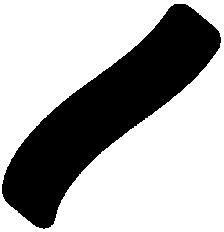











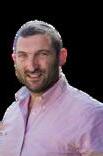
OU ISRAEL CENTER 49 Most Recent Listings in and around Jerusalem Yitzchak Kowalsky 054-766-0338 Yitzchak@yykrealestate.com www.yykrealestate.com Dream Home in Efrat Tirosh Villa 400 sqm on a plot of 700 sqm 11 Bedrooms 8 Bathrooms 4 Showers Possibility for a separate unit Completely renovated Great location Quiet street Duplex Garden Apartment in Quadra 3 bedrooms, 2.5 baths 105 sqm + 25 sqm garden Floor heating & central A/C Gym Swimming pool Sauna Private parking Storage Large Triplex Family Apartment in the Heart of Ba’aka 200 sqm on 3 levels 4 bedrooms, 3.5 bathrooms, Small Succah balcony A/C + private heating Full of light & air Quiet Street 2 bedroom, 2 baths 85 sqm 4th floor Shabbat elevator Central A/C + heat Small balcony off the bedroom Full of light & air N e w E x c l u s i v i t y o n R i v k a S t r e e t i n B a k a New Exclusivity: Penthouse in Arnona 150 sqm penthouse 40 sqm terrace Breathtaking views! 5 bedrooms, 2 full baths Central A/C & heat Shabbat elevator 2 underground parking spots Large storage: 10 sqm
WWW.FOLDEES.CO.IL | 058-707-8181 STYLE & COMFORT HIGH QUALITY PREMIUM
FOLDING CHAIRS

RABBI AARON GOLDSCHEIDER
EDITOR, TORAH TIDBITS
EDITOR, TORAH TIDBITS
RAV, THE JERUSALEM SHUL - BAKA, JERUSALEM
Counting Up
“You shall count for yourselves from the day after the day of rest, from the day of your bringing the omer (wave offering), seven complete weeks. Until after the seventh week, you shall count fifty days, and bring a new meal-offering to the Lord” (Leviticus 23:15-16). The countdown, or rather count-up, of fifty days is widely understood as an expression of anticipation and longing. As Sefer ha-Chinuch formulated it, our freedom from servitude on Pesach was only a prelude to the ultimate goal of accepting the Torah and becoming servants to the true Master, our Father in Heaven.1 We count every day that brings us closer to that long-awaited goal. Rav Avraham Yitzchak Hakohen Kook, based on earlier precedents, understood that this period of anticipation must include preparation. Let us put ourselves in the sandals of the slaves leaving Egypt. They have narrowly survived the physical abuse of the taskmasters, but they have been spiritually traumatized by the degenerate, corrosive culture of Egypt. The first day of Pesach swiftly and suddenly brings freedom from physical bondage. On the morrow begins the dedicated, regimented work to liberate their psyches from the less savory aspects of Egyptian society that have insidiously taken root. They must now engage in a different 1. Sefer ha-Chinuch, §306.
kind of toil, to chisel a noble people out of the rabble of slaves, and the optimal means is a daily commitment to personal growth, whose progress is measured in weeks.
What, though, is the essential connection between the daily count and the omer, the freshly cut barley brought to the Temple on the second day of Pesach? The omer offering consisted of barley, which mainly sees use as feed for livestock. Bringing it on the altar symbolized the rectification of man’s baser instincts, the animal side of us. On Shavuot we would bring the shtei ha-lechem, two loaves of wheat, the refined staple of mankind, to represent the culmination of our efforts during this period of gradual improvement.2
The omer represents the shared elemental power of man and beast, which is inherent to barley. When it is subsumed in the omer offering and it goes on the altar as an offering with intention, namely, the inclination of the collective will towards elevation and sanctity, it positively agitates all souls and all aspects of life and existence that pertain thereto.3
Rav Kook maintained that the count is known as sefirat ha-omer because we work on the omer of barley within us, the coarser or less refined qualities of our character. All these can be harnessed for God’s service with the proper intentions; even the physical and materialistic canbe elevated. During these auspicious days, we recommit to bettering ourselves and to personal growth.
2. Siddur Olat Re’iyah, 2:305.
3. Ibid., 1:416–417.
50 TORAH TIDBITS 1564 / EMOR
It is vital that a low starting point not lead to discouragement. Rav Kook was once asked, “Who is on a greater spiritual level, a person on a low rung or on a high rung of the spiri-
A SHORT VORT
prod each of us toward temimut, toward a greater sense of wholeness of being, with all elements of our personhood moving in harmony. We reenact the ancient spiritual journey to Mount Sinai, reliving in our own day the climb, rung by rung, toward greater refinement and a more profound commitment to the word of God. With our sights set high, during sefirat ha-omer we truly are counting up.
BY RABBI R av, Beit Knesset







SPEAKERS






descendants dwell from Egypt to Assyria. Yishmael’s story is brief. He has numerous and powerful offspring. The brevity his icant the https://gethelpisrael.com/mental-health-conference-2024/ Monday, June 3, 2024 9:00 AM - 6:00 PM HILTON, TEL AVIV / ONLINE Join renowned clinicians and researchers as they present on the latest developments in the field Enhance your professional connections through targeted networking Make a profound impact on your work with clients. MENTAL HEALTH CONFERENCE 2024 Keren Tzarfaty, Ph D, MFT Execut ve d rector of MAPS Israel S P E A K E R CURRENT RESEARCH AND TREATMENTS USING PSYCHEDELIC ASSISTED THERAPY Nir Tadmor, MSc Di ector o Education and Tra n ng at Impulse S P E A K E R DEVELOPING A MINDFULNESSBASED APPROACH TO PSYCHEDELIC INTEGRATION Michael Salamon, Ph.D S P E A K E R THE PROFOUND EFFECTS OF CHILD SEXUAL ABUSE ON SELF-PERCEPTION AND PERSONALITY DEVELOPMENT AND THE ART OF TAILORED INTERVENTION Asher Siegelman, Ph.D Director of Israel Suicide Prevention S P E A K E R SHIFTING PERSPECTIVES AND STRATEGIES: AN INTEGRATED APPROACH TO SUICIDE PREVENTION AND CARE Lisa Rabinowitz, MA S P E A K E R THRIVING IN RELATIONSHIPS WITH ADHD UNLEASHING THE POTENTIAL OF ADHD COUPLES WITH BREAKTHROUGH ATTACHMENT-BASED APPROACHES
Neuropsycholog st researcher and d rector of psycho og ca serv ces at A yn ch ldren s hosp ta school system S P E A K E R BRAIN CHANGER CORE PROCESS N DEEP HEALING AS REFLECTED BY THE IFS MODEL Thomas Hübl, Ph D Renowned internat onal teacher author and researcher K E Y N O T E THE ATTUNED THERAPIST INNER INTEGRATION ALLOWS FOR OUTER ATTUNEMENT
Shifra Wohlgelernter, Ph.D
Renowned Psychologist Author and Psychotrauma Expert K E Y N O T E NOVEL DEVELOPMENTS IN THE UNDERSTANDING OF PTSD AND THE PSYCHOTRAUMA TREATMENT FOLLOWING THE IRON SWORDS WAR
Mooli Lahad, Ph.D, Ph.D

ERETZ HEMDAH ASK THE RABBI SERVICE
FROM THE VIRTUAL DESK OF THE
OU VEBBE REBBE
RAV DANIEL MANN
RAV DANIEL MANN
The Power of Vinegar
Question: I made pareve cucumber salad in a fleishig eino ben yomo (not used in 24 hours) container. About an hour later, I used a milchig serving spoon, which then stayed in it for about a half hour. What are the halachic statuses of all of the elements involved?
Answer: As is often appropriate in complex kashrut questions, we will first explain why there could be a problem, introduce indications for leniency, and see if they suffice.
The rule is that there is no transfer between a solid and a liquid that are sitting in/alongside each other unless the contact is for 24 hours, in which case we say kavush k’mevushal (soaking is like cooking) (Shulchan Aruch, Yoreh Deah 105:1). However, if the liquid is sharp, there is assumed to be full transfer of taste in “k’dei sheyartiach,” the amount of time it takes to put a liquid on the fire and have it heat up to a boil. (There is a transfer of a “k’dei klipa” (a peel’s worth) in less time (ibid.).) This is assumed to be around 18 minutes or possibly less than that (see Darchei Teshuva 105:42). The Shulchan Aruch (ibid.) lists vinegar as such a sharp liquid.
Vinegar being a davar charif also ostensibly knocks out two broad leniencies. Fleishig (or milchig) taste that enters a utensil and
then is expelled and absorbed into a pareve food (called nat bar nat) is too weak to be the building block of a forbidden mixture of basar b’chalav (Shulchan Aruch, YD 95:2). (Whether this applies here seems to be a machloket between the Shulchan Aruch and Rama, ibid.3). Forbidden (or fleishig and milchig) particles that sat in the walls of a utensil for 24 hours deteriorate to the point that whatever taste it adds to another food is negative and therefore not halachically significant (ibid. 103:5). Neither of these leniencies apply when the food absorbing the taste is a davar charif, as it tends to give prominence to weak and/or negative tastes (ibid. 96:1).
On the other hand, the Shach (ad loc. 2) says that vinegar does not cause quick transfer of taste. There is an apparent contradiction in the Mishna Berura on whether he agrees with the Shulchan Aruch that vinegar speeds up transfer (Mishna Berura 648:54) or the Shach (Mishna Berura 447:71). He hints at the following way to reconcile the approaches (in Sha’ar Hatziyun 648:60, based on Magen Avraham 447:28). Strong vinegar causes quick absorption; vinegar that is not strong is treated like regular liquid (i.e., 24-hour cutoff).
Our case has a further level of leniency in that the solid object is not a food but a utensil, which is less absorbent. While most poskim say that a utensil in contact with a
52 TORAH TIDBITS 1564 / EMOR
תמשנ יוליעל ל"ז ןמצלז לאיזוע םהרבא ןב םירפא לאוי
Eretz Hemdah, the Institute for Advanced Jewish Studies, Jerusalem, is headed by Rav Yosef Carmel and Rav Moshe Ehrenreich, founded by Rav Shaul Yisraeli, zt”l, to prepare rabbanim and dayanim to serve the National Religious community in the Israel and abroad. Ask the Rabbi is a joint venture of the OU, Eretz Hemdah, and OU Israel’s Torah Tidbits.

liquid davar charif is treated the same as a solid food, some are more lenient regarding transfer of taste between a liquid davar charif and a utensil (see Mishbetzot Zahav, YD 105:1; Chochmat Adam 57:10; The Laws of Kashrus (Forst) p. 329-330).
An additional, strong, reason for leniency is that after several minutes of spicing cucumber salad, a significant amount of liquid (mainly water) starts oozing out of the cucumbers, into the pool of vinegar (can you confirm it happened in your case?). As we have seen, the level of sharpness can be impactful, so dilution is significant. We also find that water specifically can counteract a davar charif’s effect (see similar idea in Mishna Berura 447:43).
Other points of leniency relate to the fact that some of assumptions of the initial indication of a problem are not unanimous. There are some opinions that only that which appears in the gemara as a davar charif has that status (see Beit Yosef, YD 96). There is also an opinion that the halacha that a davar charif makes a negative taste impactful does not apply to a liquid davar charif (see Misbetzot Zahav, YD 96:1).
Based on all the above, there is ample room for leniency. Thus, you do not need to throw out the still pareve cucumber salad. Also, you can assume that the container and spoon remain as they were. Since there is some doubt, one might want to kasher the utensils if it is easy to do so (which is often not the case), but this is not required.
Having a dispute?

For a Din Torah in English or Hebrew contact: Eretz Hemdah - Gazit Rabbinical Court 077-215-8-215 • Fax: (02) 537-9626 beitdin@eretzhemdah.org

For Sale in Efrat
Dekel: * 340m Semi attached home, 11 rooms + rental unit. Great location 5,900,000 NIS
Dagan: * 6 room garden duplex. Huge 300m garden 3,600,000 NIS
Tamar: * Semi attached home - 8 rooms. 4.5 million
Zayit: * 4 room apt. (near Olive) 2,670,000 NIS
Neve Daniel: * 5 room garden duplex. 2,870,000 NIS
For Sale in Ramot B

7 room, stunning semi attached home. Great gard en. 6.5 million
Gabi- 0524588716
OU ISRAEL CENTER 53
www.angelrealty.co.il
KNOW WHAT TO ANSWER FREE COUNTER-MISSIONARY Videos • Parsha Insights • Booklets • Counseling Rabbi Bentzion Kravitz • rabbikravitz@JewsforJudaism.org


IDF DRAFT FAIR



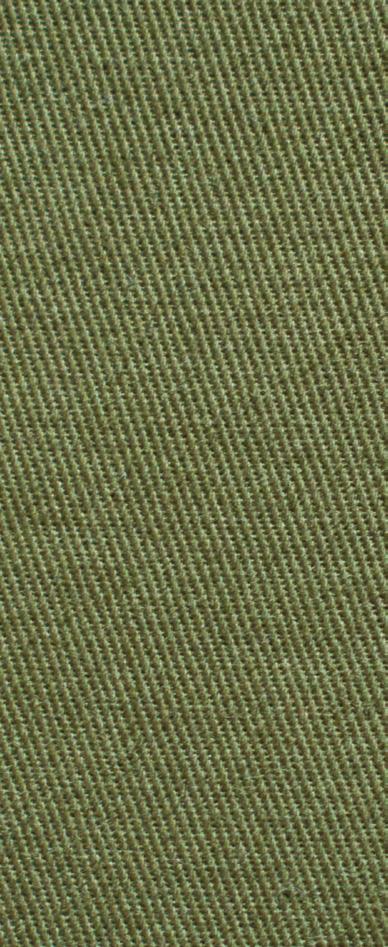

54 TORAH TIDBITS 1564 / EMOR


Save The Date! May 22, 2024
Get excited for Olim Al Madim: the IDF Pre-Draft Olim Fair!
At this event, Olim joining the army will have the opportunity to meet IDF Meitav representatives for assistance with recruitment examinations and drafting procedures. This event is geared towards Olim who have already started their Tzav Rishon and are before their draft date.
Nefesh B’Nefesh Aliyah Campus Sderot Itzhak Rabin 10, Jerusalem 12:00-16:00
All services will be offered in multiple languages throughout the event.
For more information & registration:
OU ISRAEL CENTER 55
WWW.NBN.ORG.IL/OLIM-AL-MADIM

TORAH VEHA'ARETZ
INSTITUTE
BY RABBI MOSHE BLOOM en.toraland.org.il

Swords of Iron #4 - Hefker After Gemar Melachah
What happens if a farmer harvests the entire field, puts the produce in baskets or crates, and then has no way to sell them? He then renders the produce hefker, ownerless, donating part or all of it to soldiers, without separating terumot and ma’aserot. Is it considered halachically hefker?
The halachic question here is whether hefker following gemar melachah, the completion of work, is still considered ownerless property and thus exempt from terumot and ma’aserot. Gemar melachah is the stage after which it is forbidden to eat any food, even casually (achilat aray), from produce without separating terumot and ma’aserot, meaning it becomes tevel (untithed produce) (Rambam, Ma’aser 3:1). Simply put, gemar melachah is defined as the stage when the produce is placed in baskets or crates. The posekim are divided regarding hefker following gemar melachah, when the produce has already assumed the status of tevel (untithed) and is obligated in terumot and ma’aserot.
The Mishnah (Pe’ah 1:6) states: “One who gives [produce] as ownerless is exempt from giving tithes until he makes a stack (yimare’ach).” Miruach marks the gemar melachah. The Mishnah here says that a person can abandon his field and its produce, thus exempting whoever takes it from the obligation
of separating terumot and ma’aserot, only until the stage of miruach. In other words, if hefker occurs after the completion of work, it is not effective. Once produce assumes the status of tevel and is subject to terumot and ma’aserot, it is impossible to go back and exempt them from the obligation. Most Rishonim rule that hefker after gemar melachah is not effective (Tosafot, Bava Metzia 21; Rosh, Pe’ah 1:6; Meiri, Shabbat 127; Semag, Aseh 133, and more).
Rambam (Terumot 2:11) states that hefker produce is exempt from terumot and ma’aserot, without mentioning whether it is before or after gemar melachah. Rabbi Shlomo Sirilio (Rashas, Pe’ah, end of chap. 1) thus deduces that hefker is effective even after gemar melachah. Minchat Chinuch rules accordingly (395). In contrast, Rabbi Shlomo Zalman Auerbach (Ma’adanei Eretz, Terumot 2:11), Chazon Ish (Ma’aserot 3:8), Rabbi Kanievsky (Derech Emunah, Terumot 2:11), and most Acharonim (see Mishpatei Eretz 5:3) interpret Rambam differently and rule that hefker does not take effect after completion of work, following the plain understanding of the Mishnah in Pe’ah. We follow this latter approach.
Conclusion: If farmers renders their produce ownerless only after packing them in baskets and crates, they are obligated in teumot and ma’aserot.
56 TORAH TIDBITS 1564 / EMOR



OU ISRAEL CENTER 57 WHEN SECONDS COUNT UNITED HATZALAH IS THERE! United Hatzalah's network of 7,000+ first responders help save thousands of lives each year across Israel by providing medical treatment in an average response time of 90 seconds or less. www.israelrescue.org UNITED HATZ AL AH
 HEAD OF MACHON LECHEM HAPANIM
HEAD OF MACHON LECHEM HAPANIM
Fragility and Strength
There is a machloket in the Gemara which component is the ikar, the Shulchan or the Lechem Hapanim? Is the Shulchan a secondary “vessel” on which the primary Lechem Hapanim sits (Menachot 100a)? or is the Shulchan the primary component (Zevachim 87a)? The Zohar Hakadosh (part 2, 154a) says that the Shulchan, mentioned first in the Torah, is the ikar. The Zohar likens the Shulchan to a tree and the Lechem Hapanim to its fruit - without the tree there can be no fruit.
There is another machloket regarding the shape of the Lechem Hapanim (Menachot 94b). One opinion says it resembles a rectangular shaped ark, “Teiva” (like that of Noach/ Moshe, but without a roof). The second opinion says it resembles a “Sfina Rokedet” (a curved-bottom ship dancing in the waves, the shape of a smiling mouth (Meir Panim, chap. 4))
Twelve loaves of Lechem HaPanim, in two stacks of six, resembling two Serafim each with six wings, smilingly face each other on the Shulchan - like the Kruvim on the Aron.
The twelve Lechem Hapanim symbolize the Twelve Tribes, each loaf corresponding to a specific tribe. We know the order of the twelve stones on the Choshen, the
Torah specifies them. The question is “In which tribal order are the Lechem Hapanim arranged on the Shulchan?” and the answer is – “Nobody knows!”, it is not written anywhere.
The Torah purposely omits the order, as do Chazal. We do not know the order, for a reason – because the lack of hierarchy on the Shulchan is its secret, its essence. On the Shulchan all the loaves are equal. The gematria of the word “Shulchan” (without the vav) is “shivyoni” (equal) and also “Shalom yud bet” (peace amongst the twelve) (Meir Panim, 155). There is no squabbling between the loaves on the Shulchan - “I want to be on top”, “I deserve to be on the stack closer to the Parochet” etc.
Unsupported, the fragile Lechem Hapanim would deform and break. They maintain their stability only because of upright, rigid side supports (Kesavot) and hollowed halfpipes (Menakiyot) below, symbolizing integrity and honesty. They rest on the Shulchan surrounded by elements symbolizing the written and oral Torah (Zer, Misgeret).
Using the Shulchan and Lechem Hapanim as a model, the Torah reveals the blueprint for the survival and prosperity of Am Yisrael in this material world.
There is a reason the shape of the Lechem Hapanim is called Sfina Rokedet. Ships do not “dance” in calm waters. For Am Yisrael to prevail in the stormy seas of this world, unity is required – emanating from the realization
58 TORAH TIDBITS 1564 / EMOR
ELIEZER MEIR SAIDEL GUEST DVAR TORAH
that each of us is an essential component of the whole, no more nor less important than any other.
Despite our inherent fragility, when we envelop ourselves in the principles of the Torah, radiate a smile of respect and appreciation for every individual in Klal Yisrael (Pirkei Avot 1:15), we become a powerful “secret weapon” (the secret that Beit Garmu refused to reveal) that radiates invisible veins of prosperity throughout the world and brings about world peace. The gematria of “Shulchan” (in ribua format) is “Brit Shalom”.
Meir Saidel is the head of Machon Lechem Hapanim and author of sefer Meir Panim.

OU ISRAEL CENTER 59
Eliezer
MAXI BoX 053-7272-815 ד״סב Storage Your place for extra space Jewish Heritage and the Golden Triangle A fascinating journey into the land of the palaces and its rich Jewish history 04 - 19 November 2024 Limit seats available Professional Tour leaders Professional Tour leader 5* hotels (where available) indiakoshertravel.com moshe@indiakoshertravel.com Rich itinerary Glatt kosher Group tour Guaranteed Departure You just dream it We will mak it happen INDIA KOSHER TRAVEL Glatt Hachnassat Kalla - YAD GITTEL Get your trousseau (nedunya) at COST PRICE For more details call 0523882751 or Sonia 0528066664 yadgitteltrudy@gmail.com

TORAH 4 TEENS
BY TEENS NCSY ISRAEL
 Ezra & Tali Silton ChashModi’in Chapter Directors
Ezra & Tali Silton ChashModi’in Chapter Directors
Kedusah:
Relevant Then & Now
In Parashat Emor, we learn a lot about kedusha.
The opening pasuk of the parasha, “Speak to the priests, the sons of Aaron, and say to them...,” emphasizes the importance of communication and leadership within the community. This reminds us of the significance of clear and respectful communication in our relationships, both within our families and communities. There is also emphasis on kedusha which is a reminder of the importance of bringing spirituality to our daily lives. Just as the Kohanim were required to maintain a higher level of holiness, we are all called to elevate our actions, thoughts, and speech to reflect our commitment to serving a higher purpose.
By remembering what the Kohanim did to keep their kedusha, we are reminded how this is relevant to us too, as we connect with our heritage, and deepen our relationship with God.
 Chana Kenton Neve Daniel 9th Grade
Chana Kenton Neve Daniel 9th Grade
Counting Towards Holiness
A central theme in this week’s parsha,
Emor, is holiness. We are given numerous commandments intended to bring us to a purer, more spiritual place. After discussing the purification of the Cohanim, the Torah sets forth several commandments for the rest of the nation to achieve this goal. As they are listed, a pattern begins to emerge. In each instance, there is a series of seven, whose outcome is a higher state of being.
For example, we are instructed to bring cattle offerings. The animal must stay with its mother for seven days after its birth, and only on the eighth can it be sacrificed. Next, the weekly observance of Shabbat is discussed, where on the seventh day we receive an extra neshamah, and come closer to Hashem. Finally, there is the counting of the omer, a seven-week cycle anticipating the holiday of Shavuot.
The pasuk begins “And you shall count for yourselves… seven complete Sabbaths shall there be.” The commentators allude to a much deeper meaning held in the words “for yourselves”. This mitzvah of counting is for our benefit. In this period, we go through introspection and self-analysis. We examine all aspects of our life, and work to build on and enhance them. Each day is in preparation for the ultimate event, receiving the Torah and divine revelation.
When we left Egypt, our nation was at the forty-ninth level of impurity. Starting from Pesach, the holiday that commemorates this event, we bring ourselves up. Forty-nine days,
60 TORAH TIDBITS 1564 / EMOR

for forty-nine levels of our ascent. HaKtav VeHaKabalah points out an intrinsic connection between this counting, and the process of refinement that is experienced throughout. Both the words “lispor” - to count, and “safir” - a sapphire, share the root of ר.פ.ס. Just as one will mine and perfect a gem, likewise, we should be doing the very same with ourselves.
He goes on with a metaphor of one who receives money. He would measure it on a scale, count its value to see if it is authentic, lest it be counterfeit. So too, we should examine our character, our middot, our ‘measures’ to see whether they are true and good, as opposed to disingenuous or negative - things we ought to distance ourselves from.
With God’s help, these coming weeks will be a time of personal growth and greater holiness for us all, as we approach Matan Torah.
NACHI REALTY 054-461-3943
For sale in Givat Mordechai
3 rooms on the ground floor with building rights for 80 additional meters.
2.47m shekel
For Rent in Katamon 30m studio on Bustani street, ground floor, small garden, for independent people over 55.
3500nis/month incl va'ad, hot water & heat.
Yosef Ezriel ben Chaya Michal
Chana bat Bruriah
Benzion Simcha Mendel Ben Chana Rachel
Feyge Sara bas Chaya Peshe
Nechama Charna bat Feigel
Leah Naomi bat Tova
Pesach ben Sarah Frieda
Smart Sky specializes in designing motorized shading systems





Smart Sky specializes in advancedcustom shading systems suitable for all seasons.
Our systems offer a variety of enclosing solutions for expanding your living areas, balconies, pools, shuls and businesses.
Smart Sky's professional Jewish installation team use only optimum quality and high grade imported materials.

This time do it the way!
OU ISRAEL CENTER 61
ד”סב
Stunning luxurious appearance Opens for Succos Quality service and warranty
Weatherproof
המלש האופר
אנדהאב לרפ ןב עשוהי םהרבא הגלוא ןב קיזייא בל הלחמ ןב ןתנוהי








Embrace styles. Experience shades. Explore endless possibilities. << 02-3762010 EXPERIENCE WIGBOX Comfortable waiting area for husbands | Freshly baked cookies, cappuccino & ice co ee | Childrens corner | Nursing Room | Warm, patient service with zero pressure The wig is just an excuse ;) Kiryat Hamada 3, Entrance to Har Hotzvim Plentiful parking and public transportation from everywhere 1-HR PARKING ON US UNTIL 4 P.M. AFTERWARDS EASY STREET PARKING. 02-3762010 Ask@wigbox.co.il Wigbox.co.il FOLLOW US:















































































































































































 HEAD OF MACHON LECHEM HAPANIM
HEAD OF MACHON LECHEM HAPANIM


 Ezra & Tali Silton ChashModi’in Chapter Directors
Ezra & Tali Silton ChashModi’in Chapter Directors
 Chana Kenton Neve Daniel 9th Grade
Chana Kenton Neve Daniel 9th Grade














